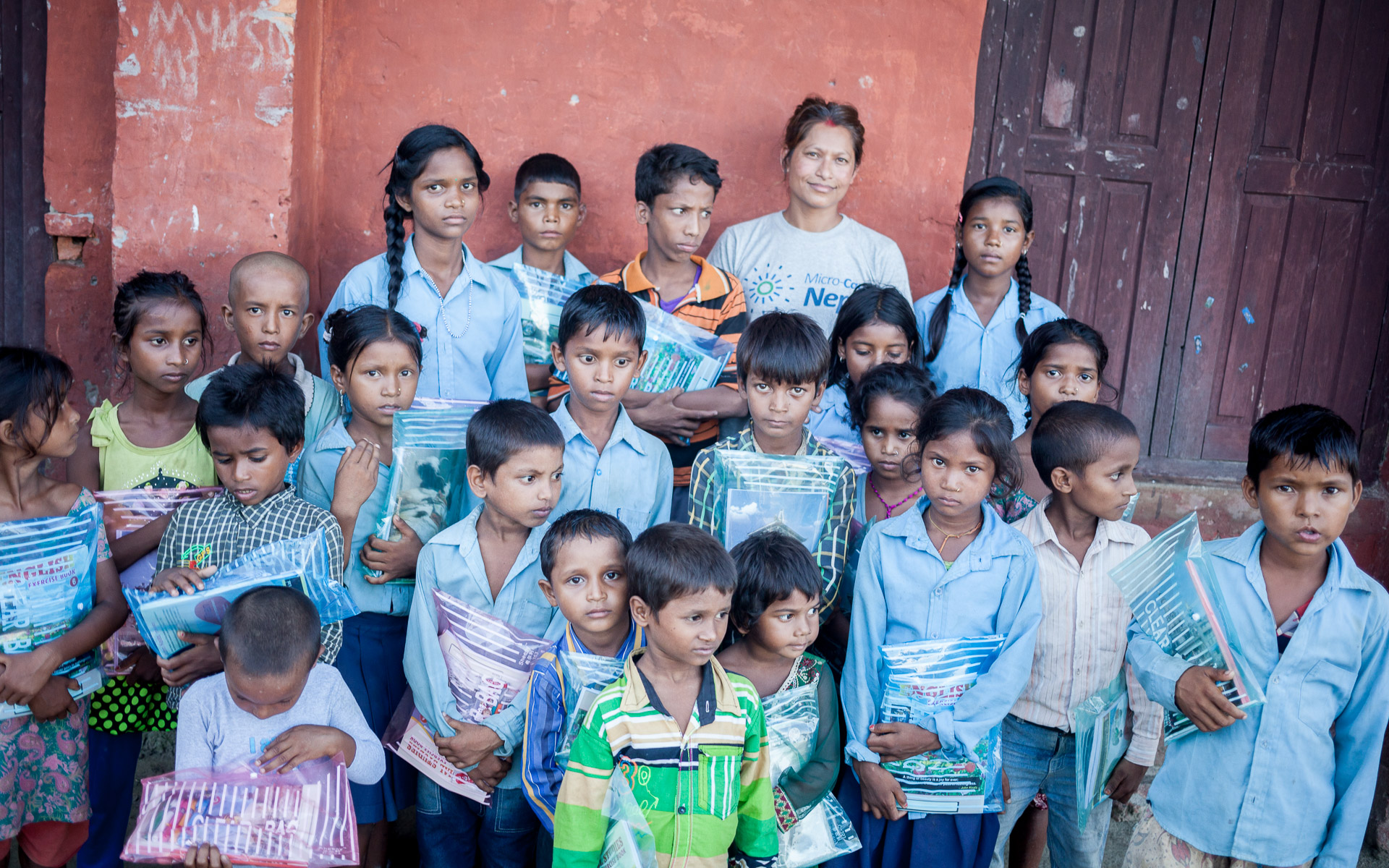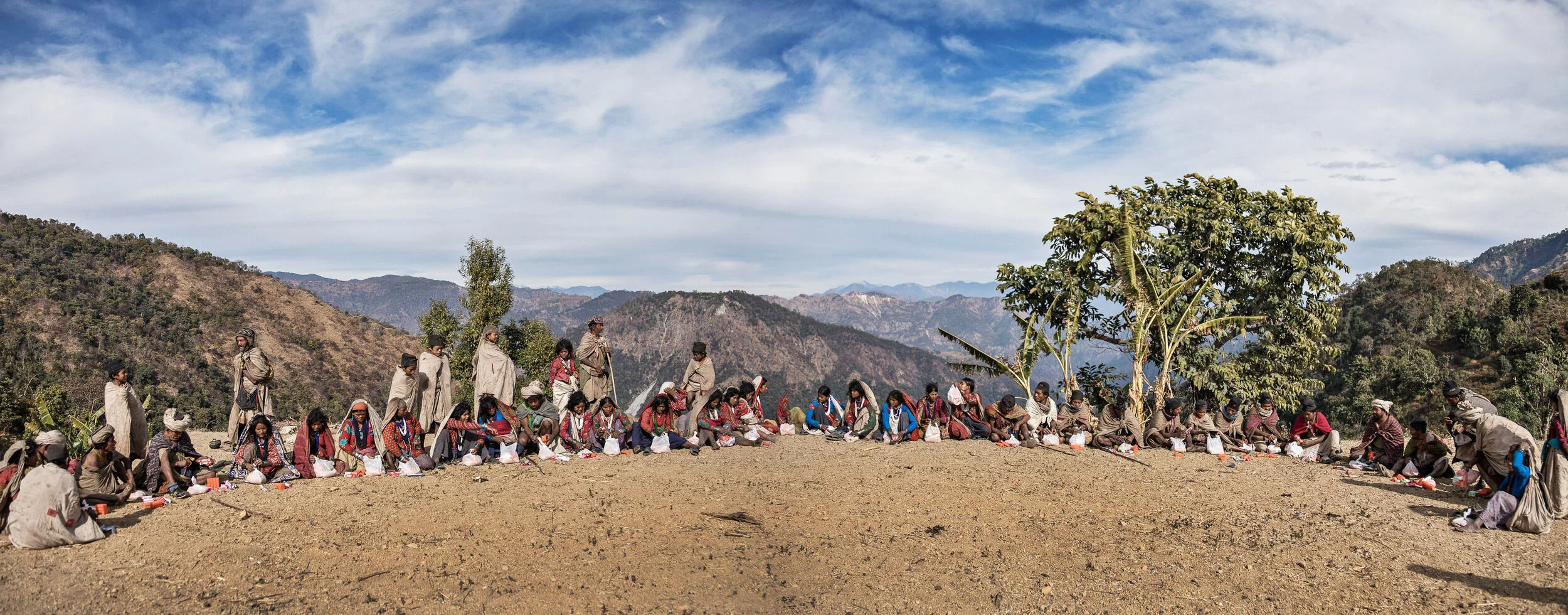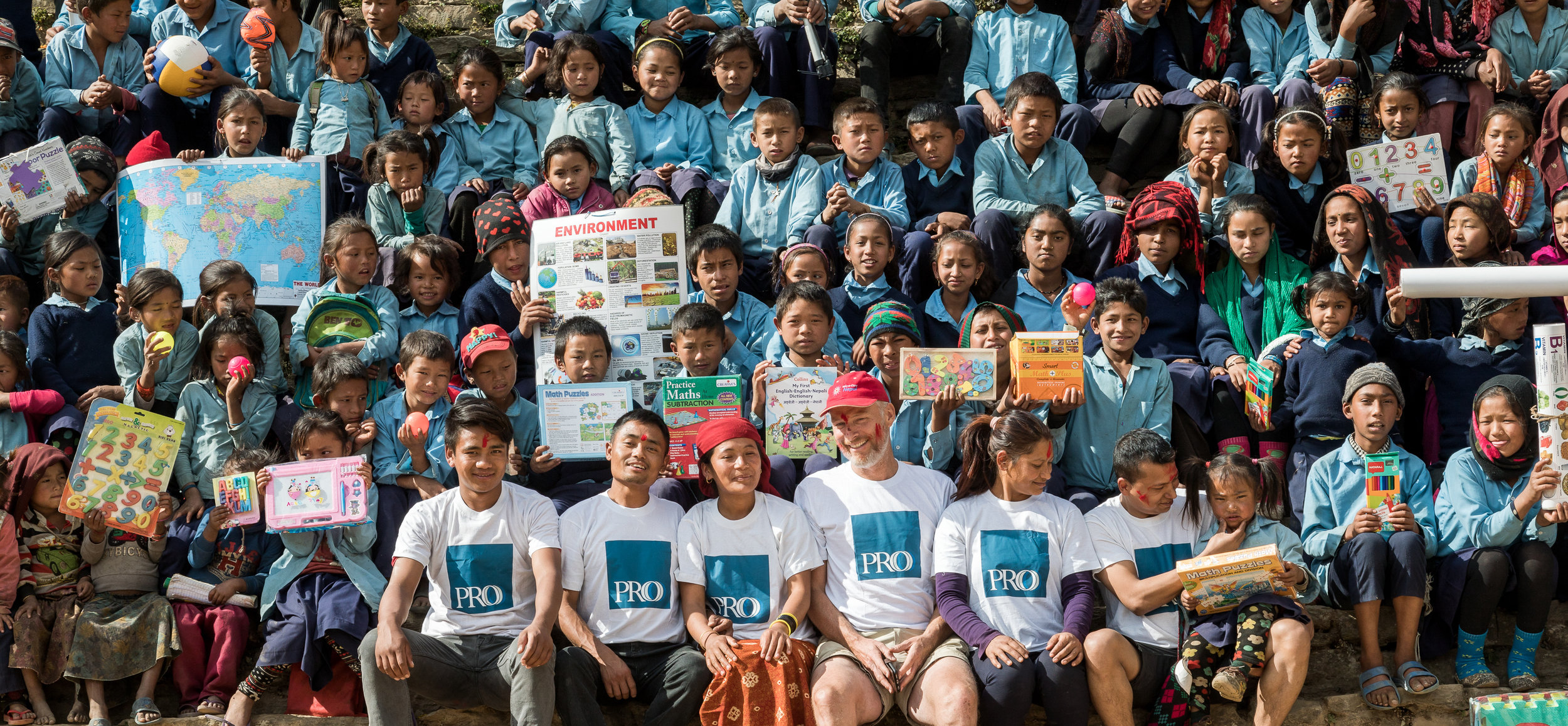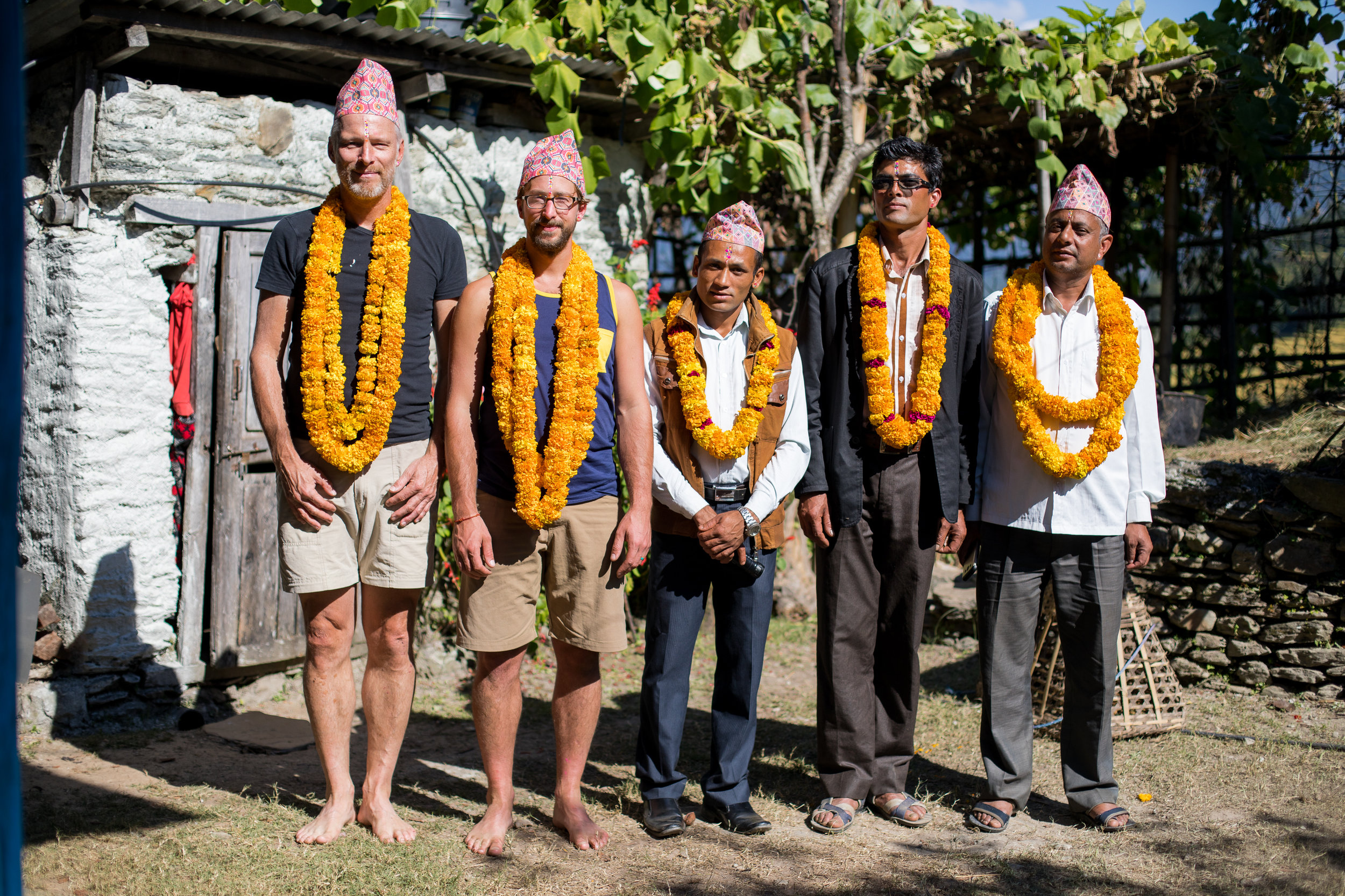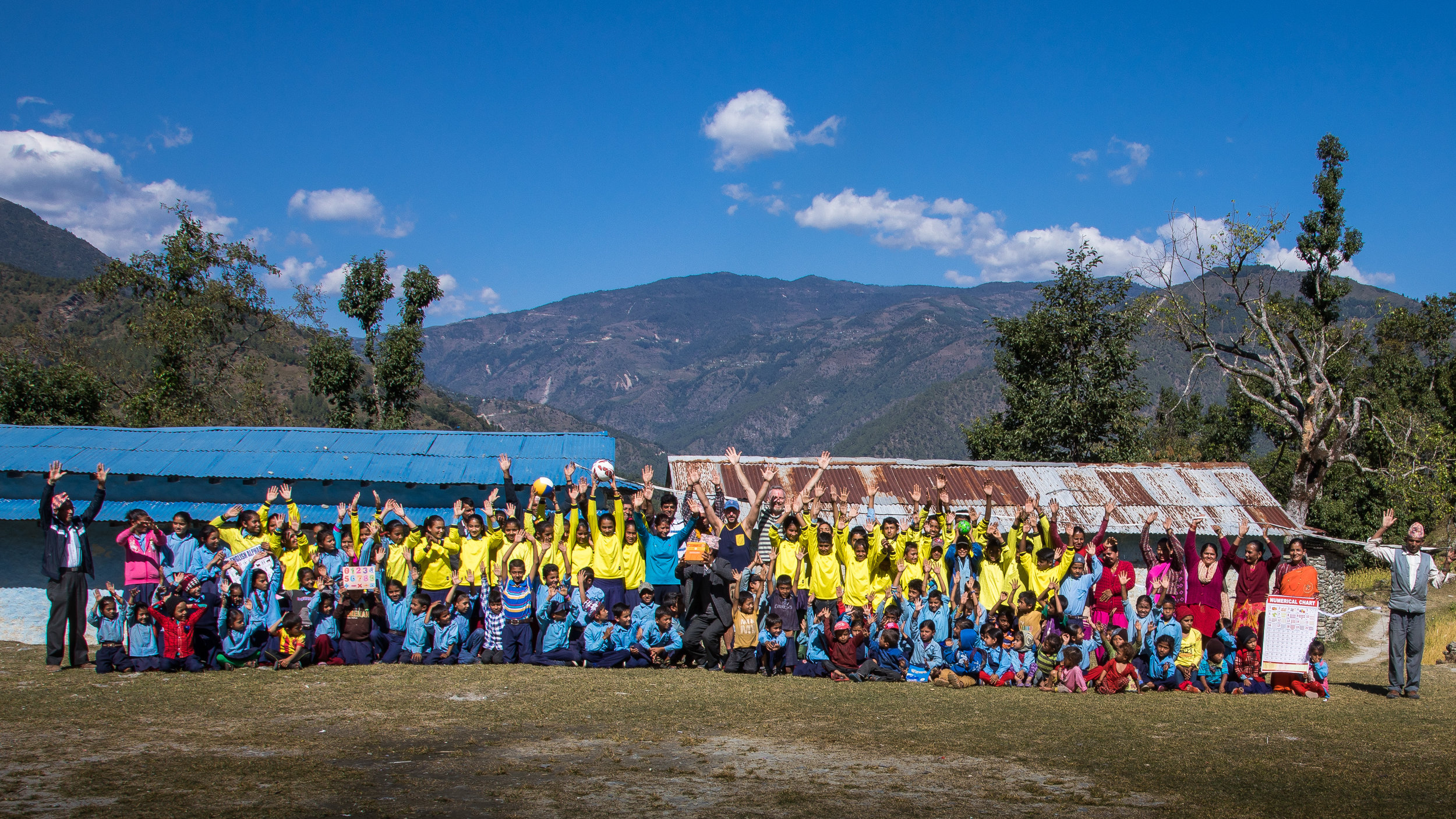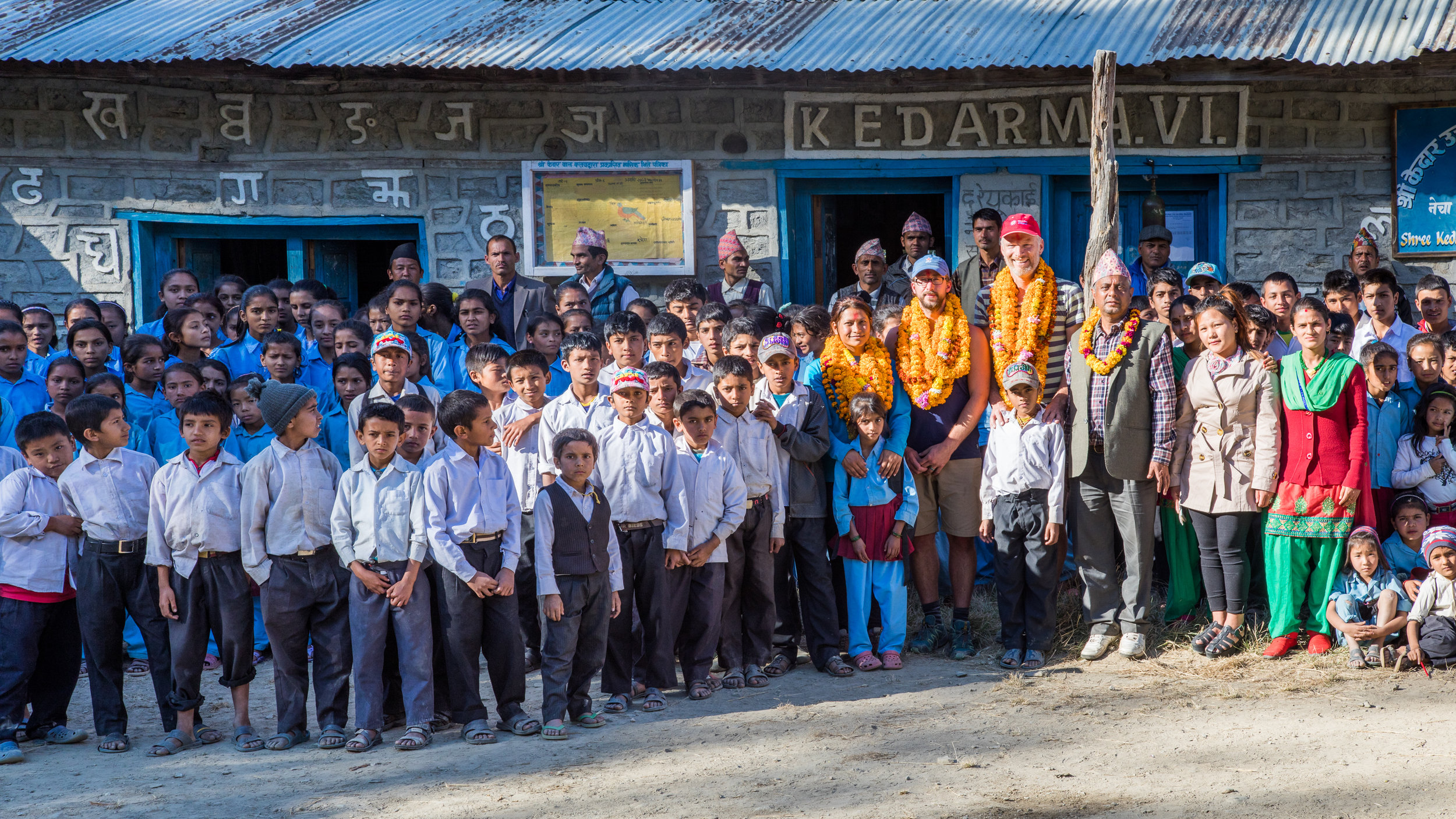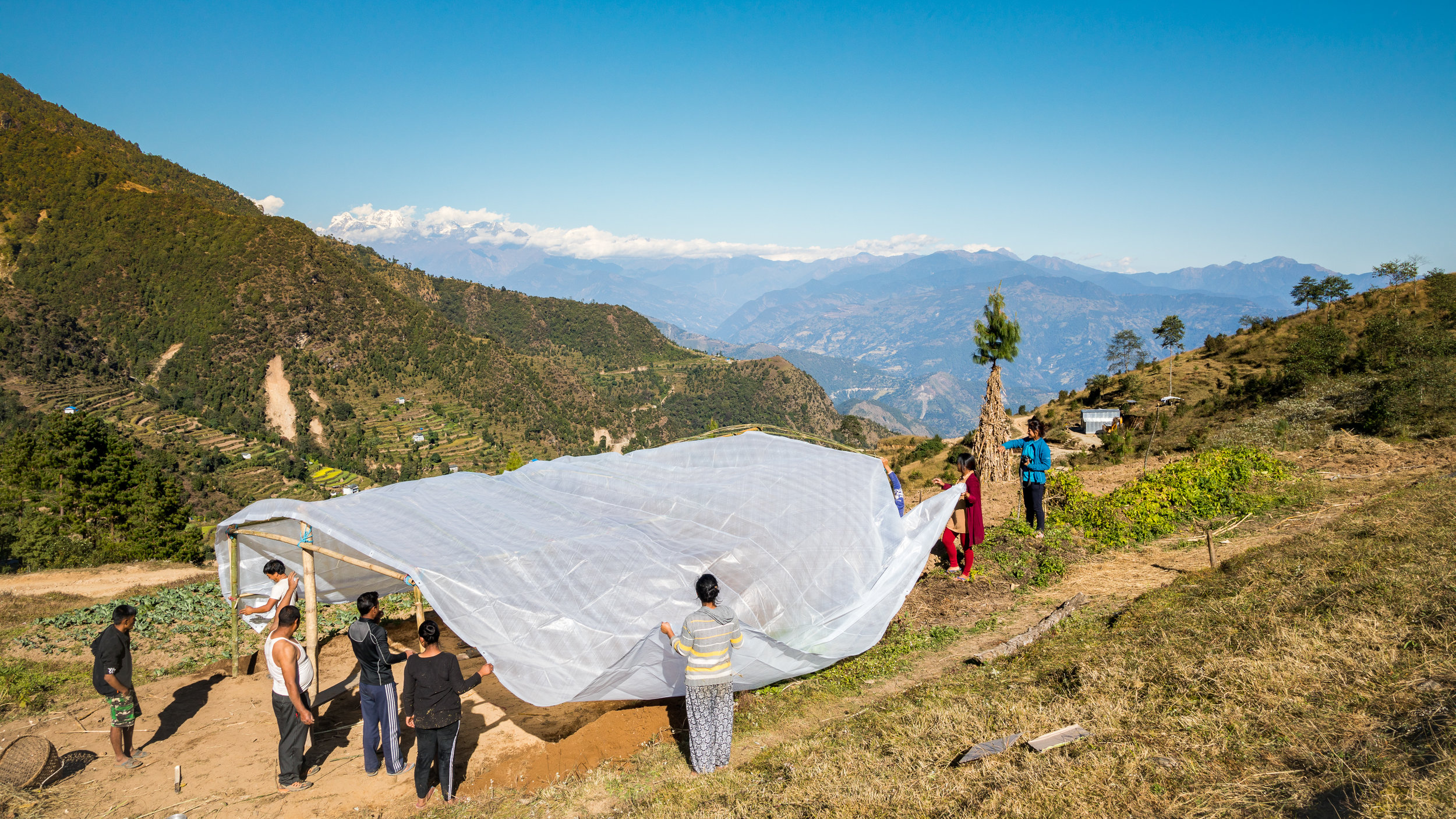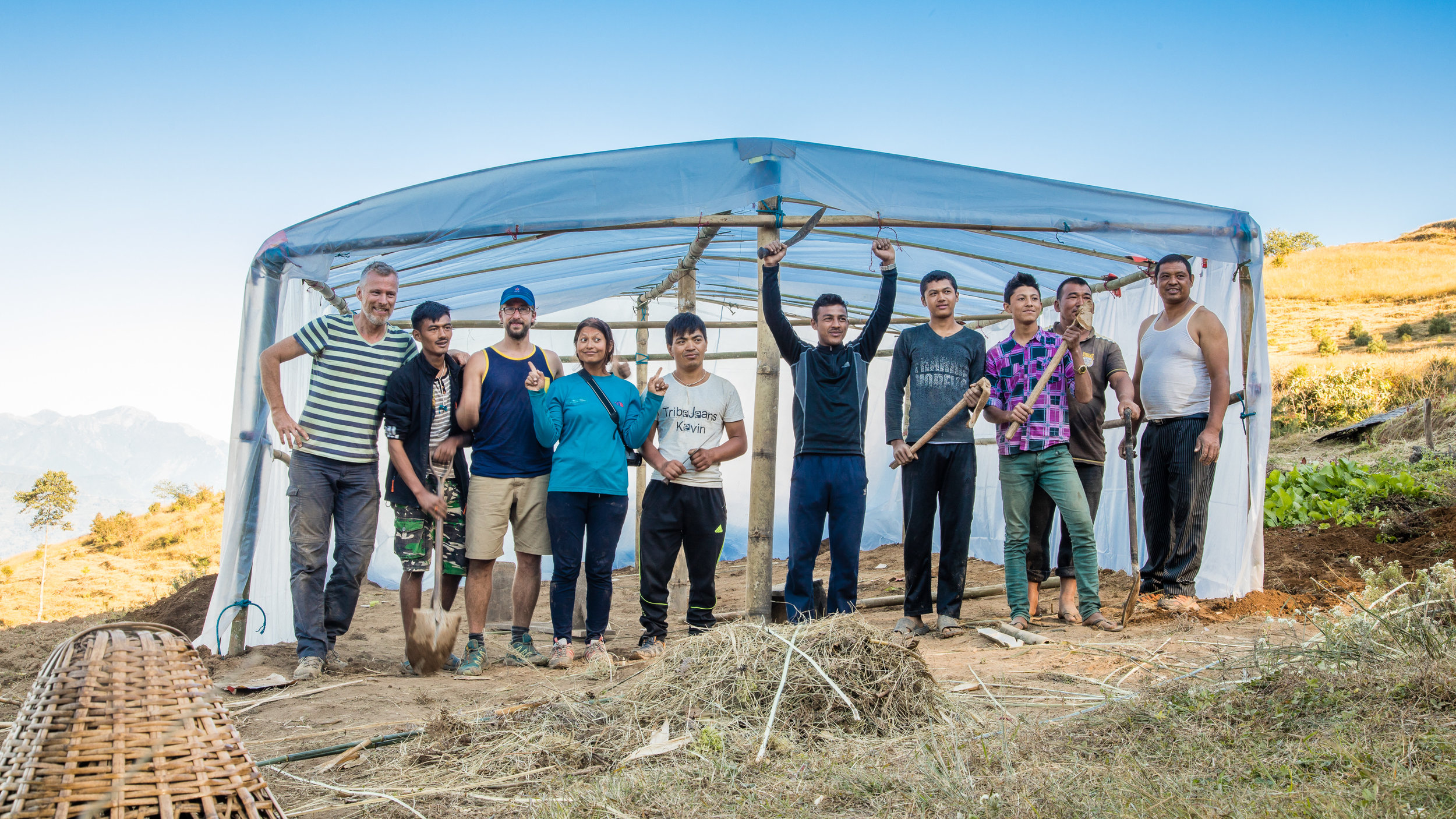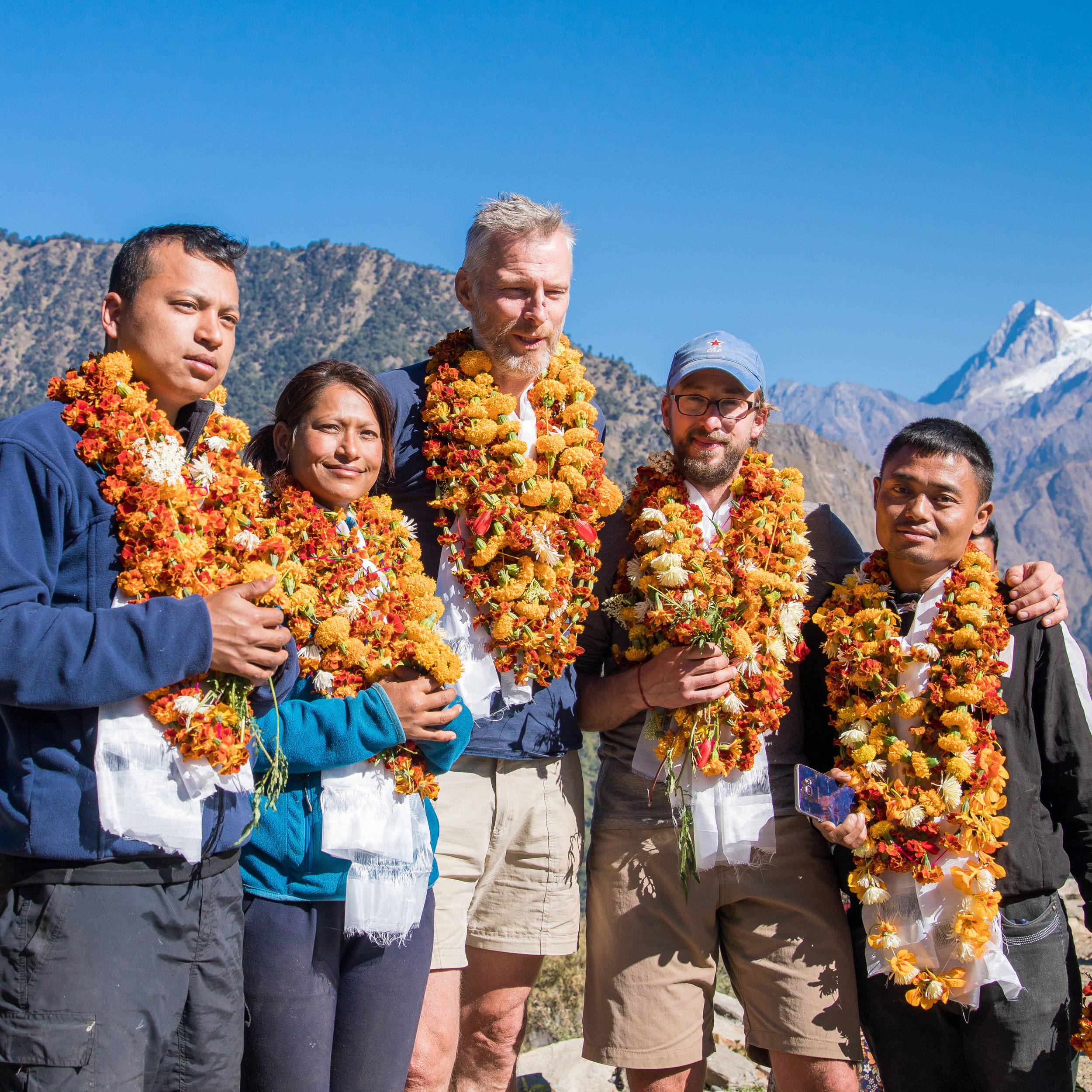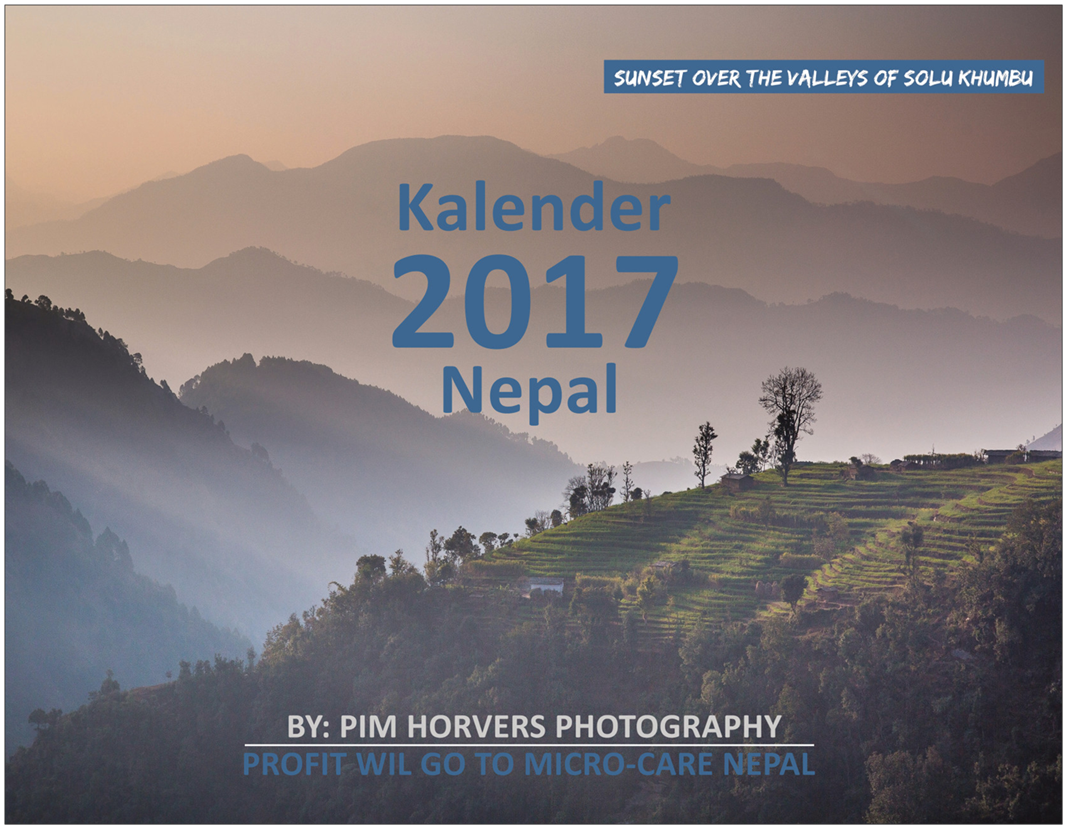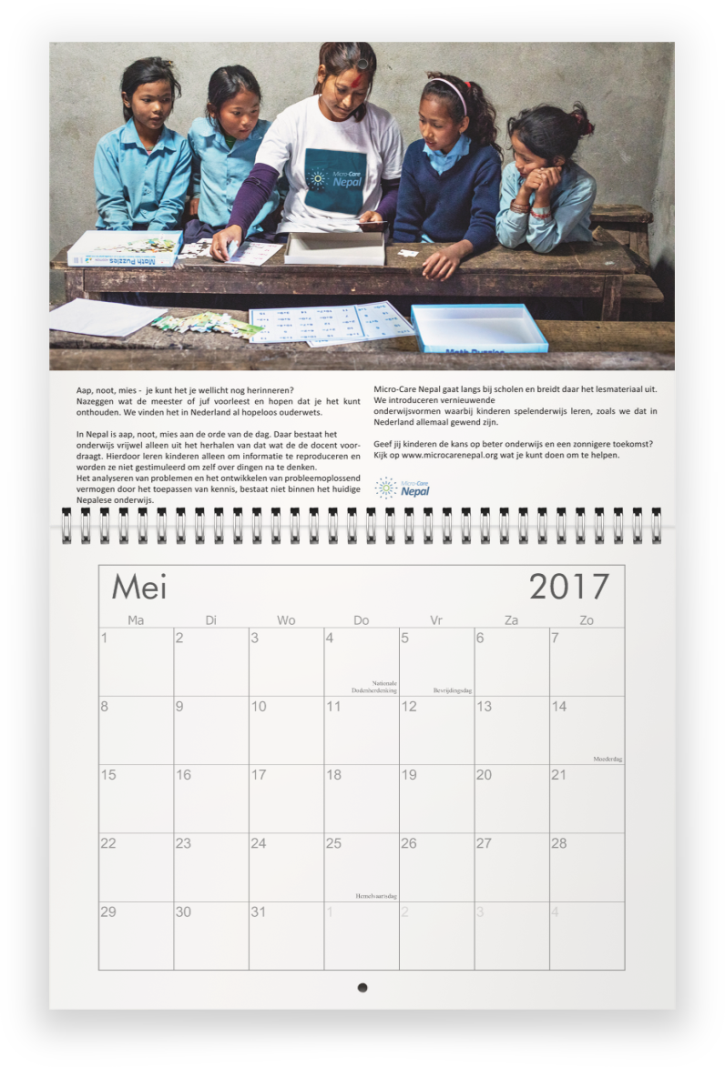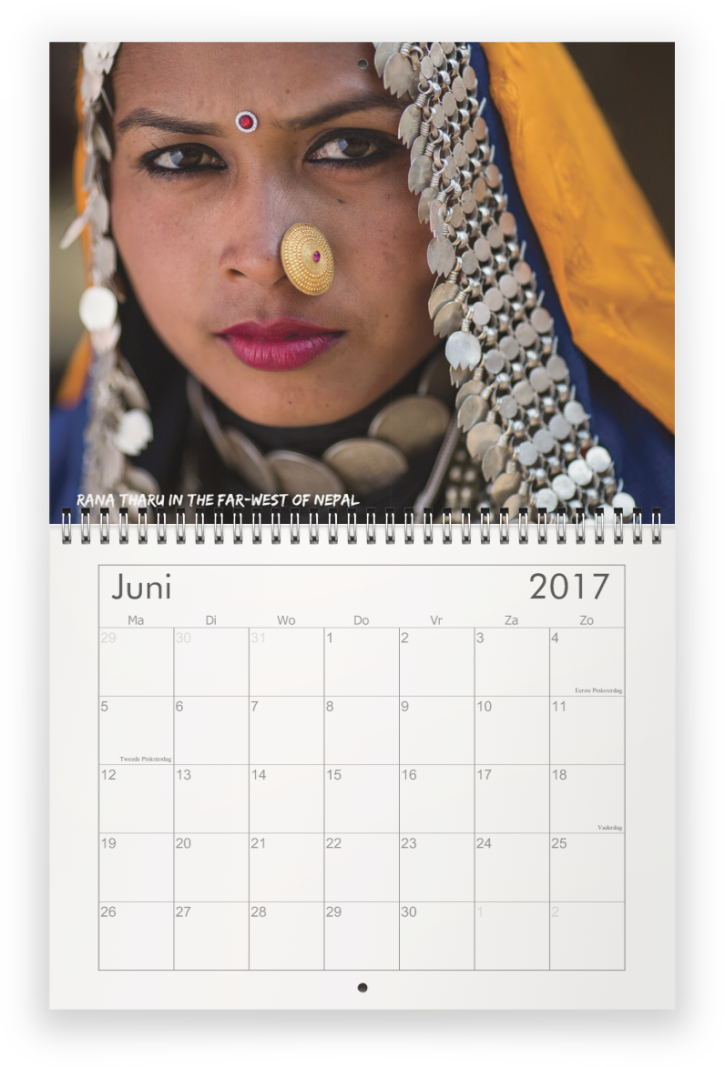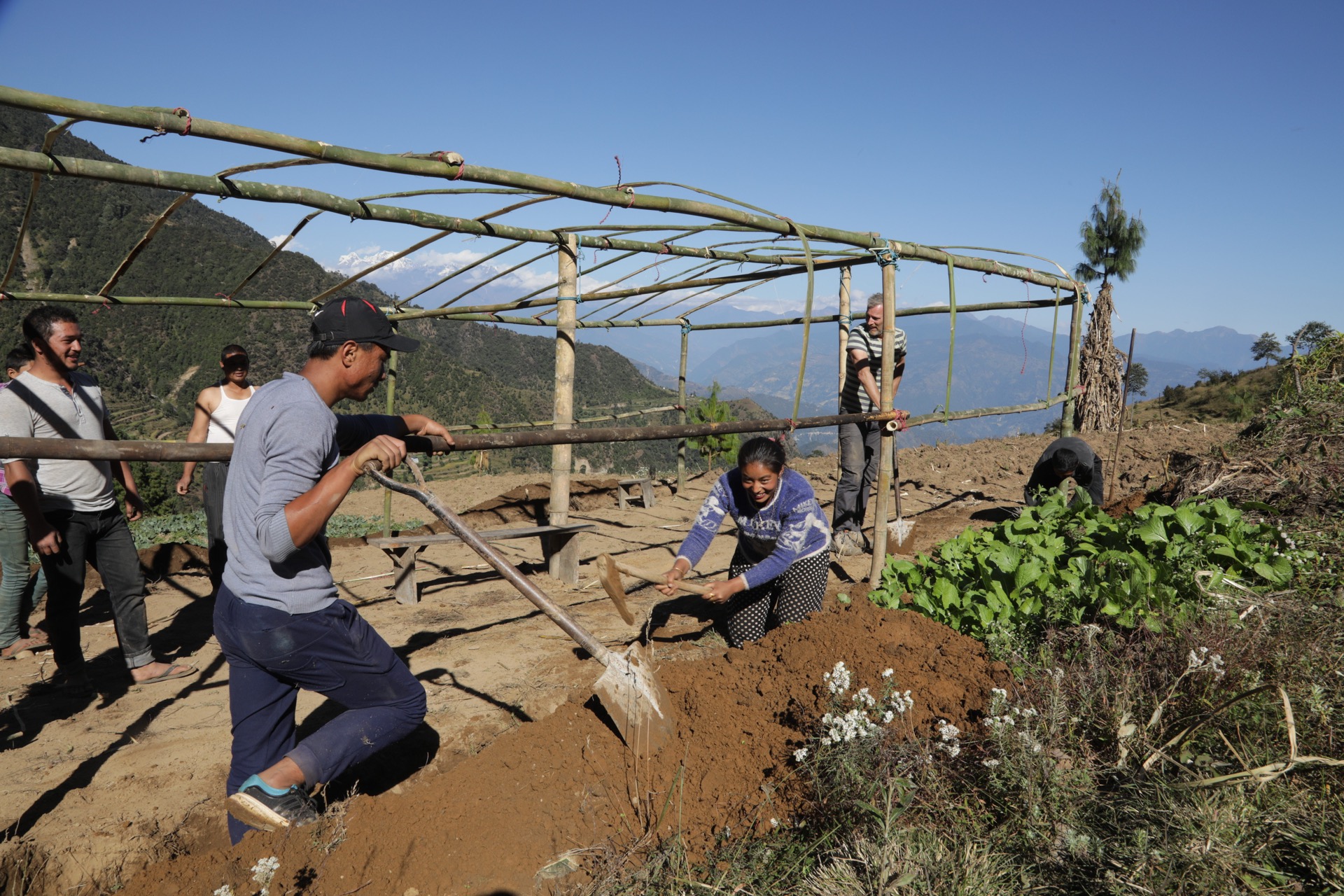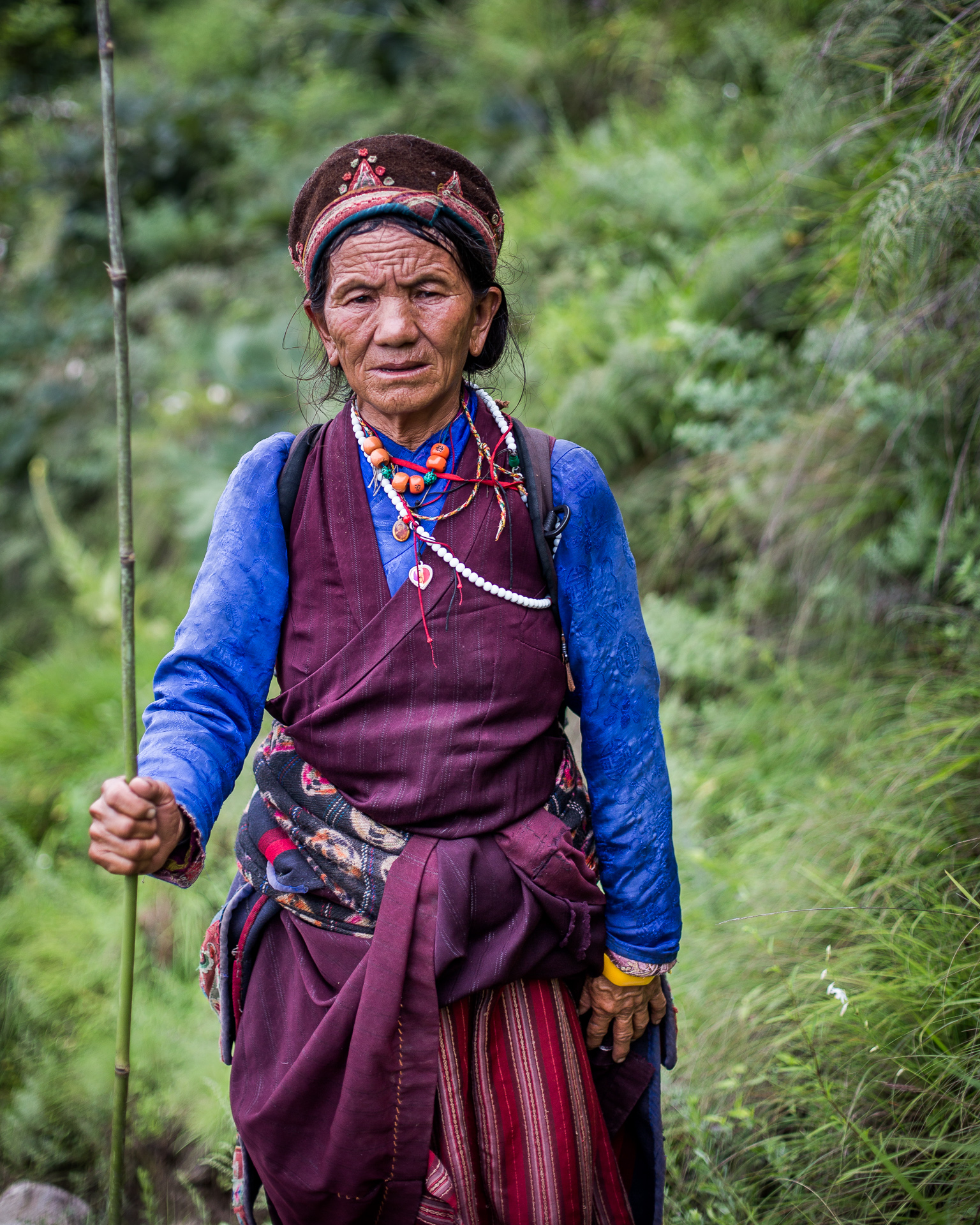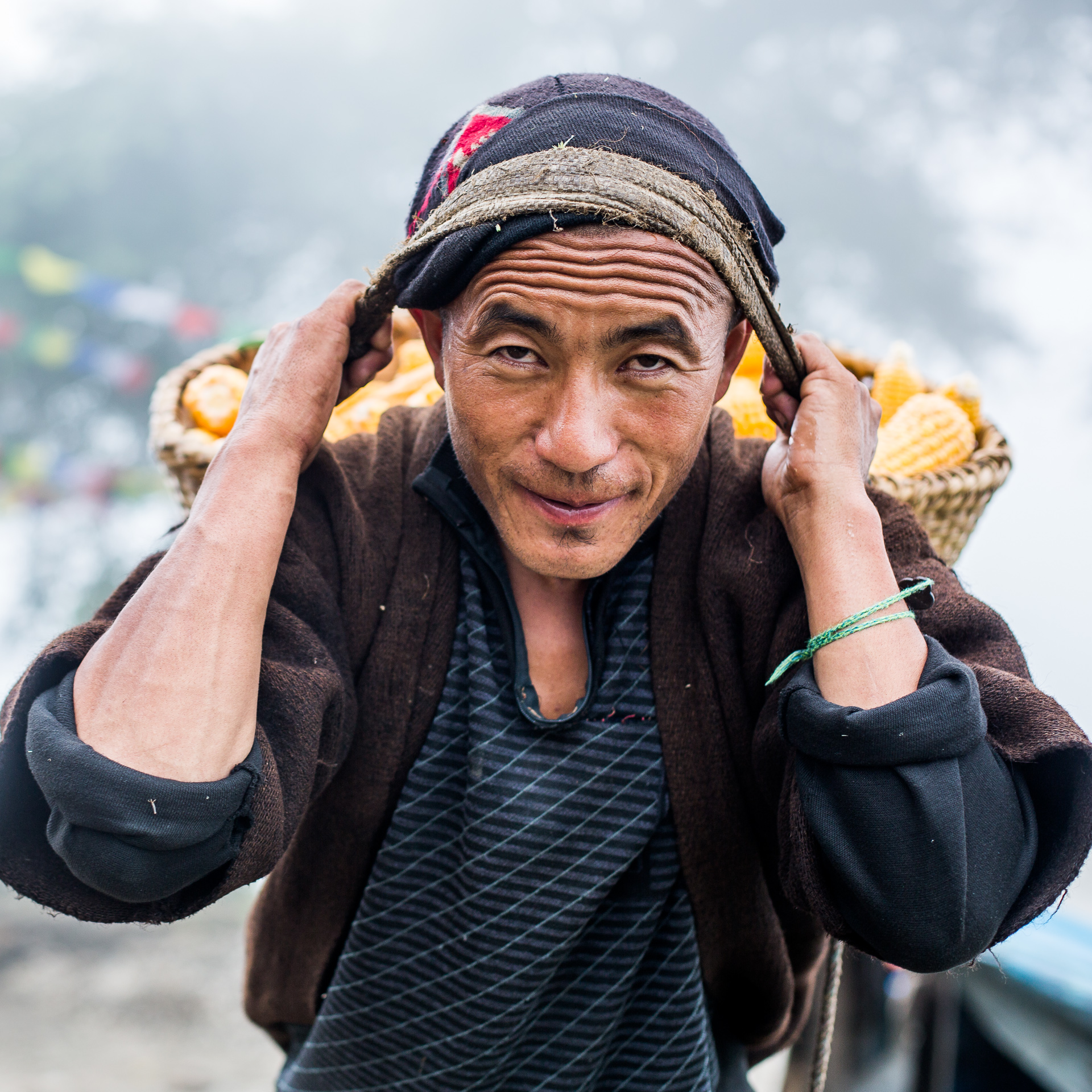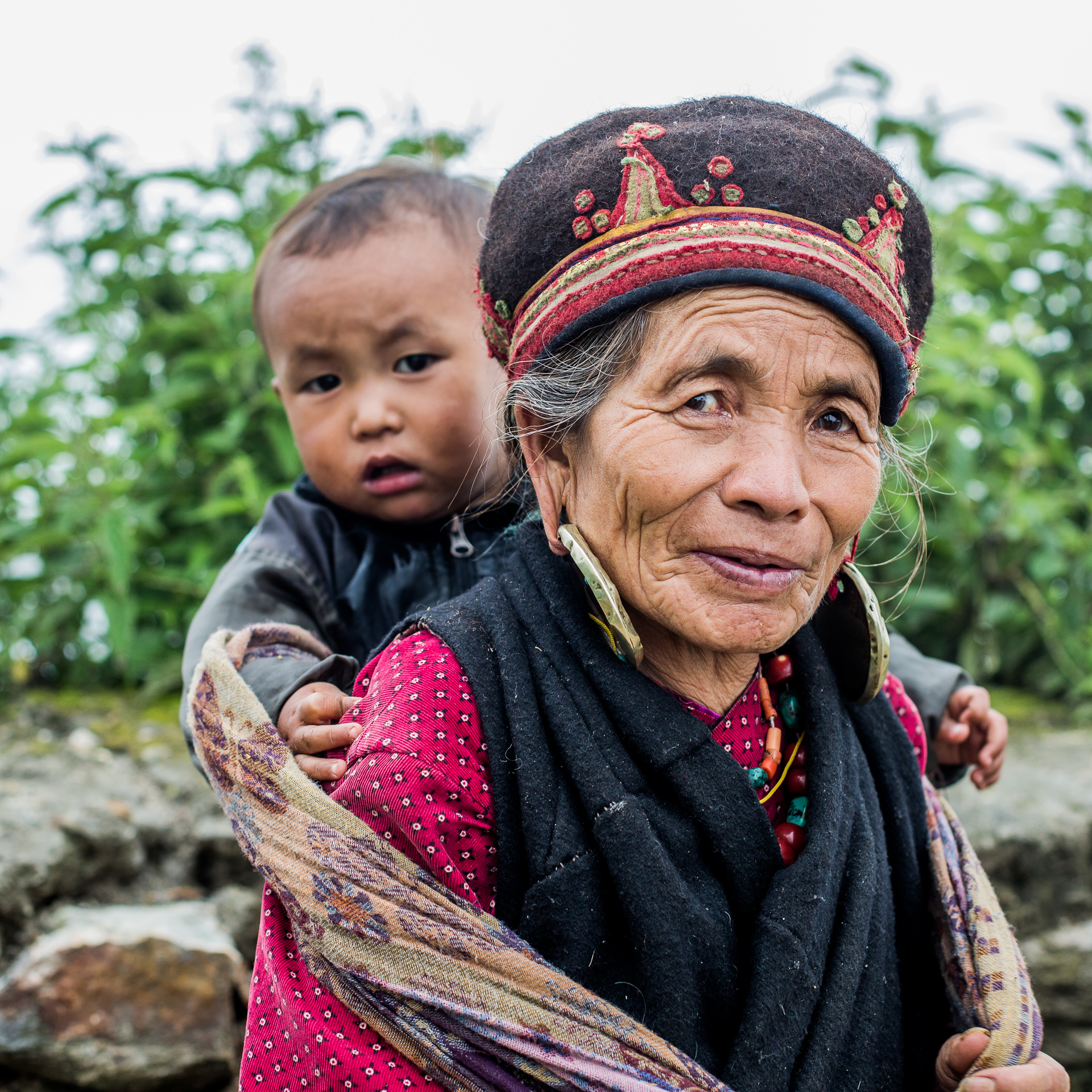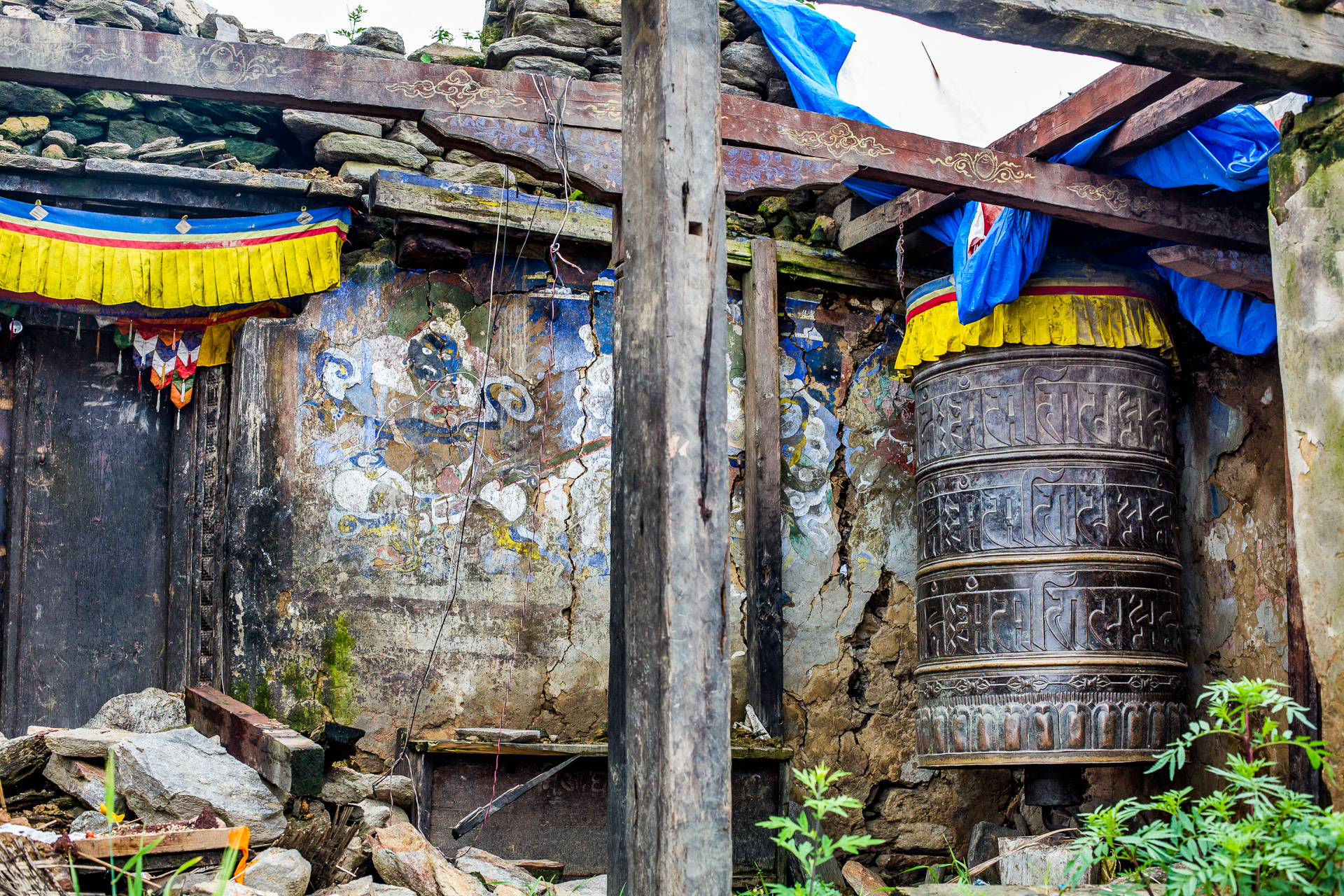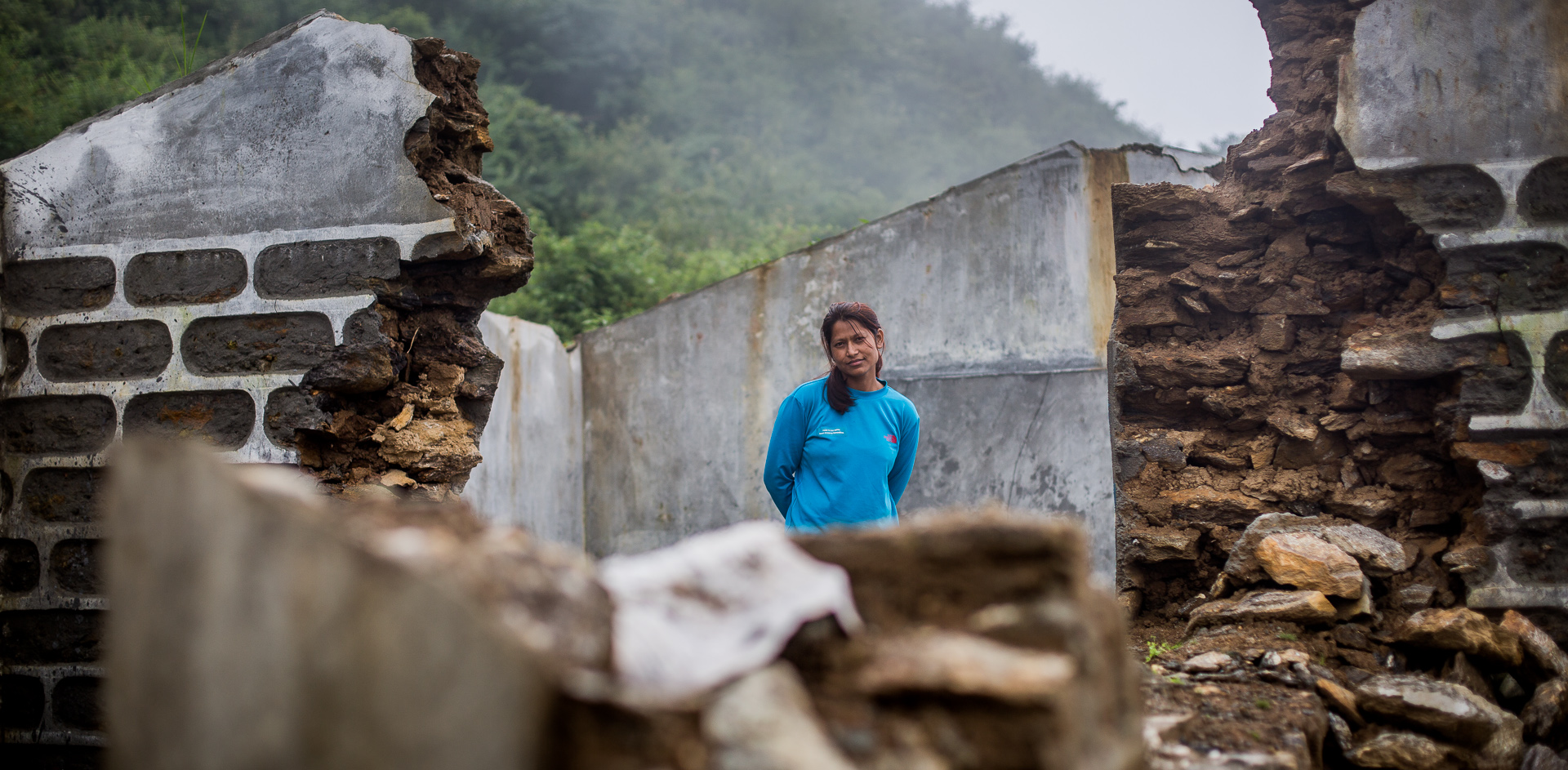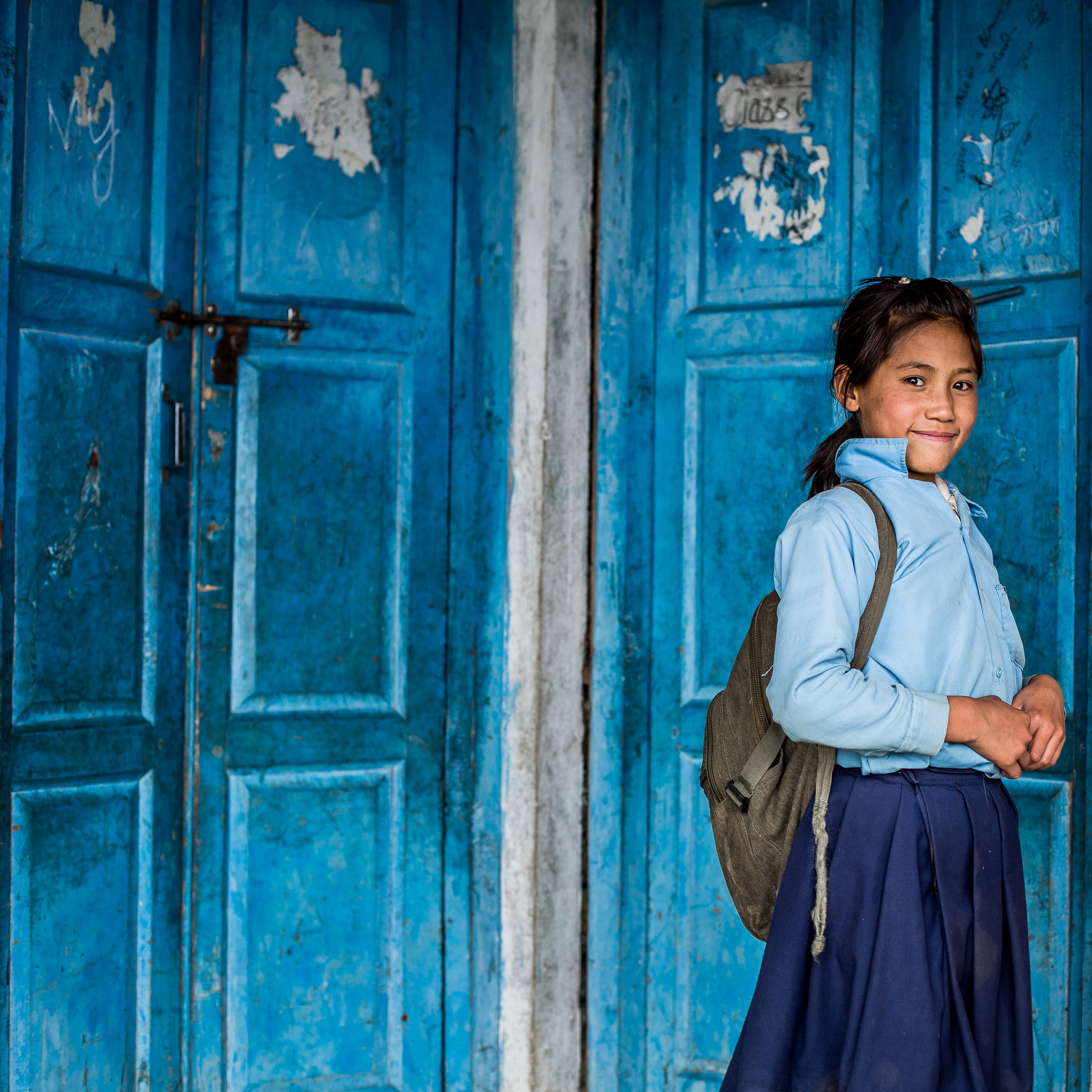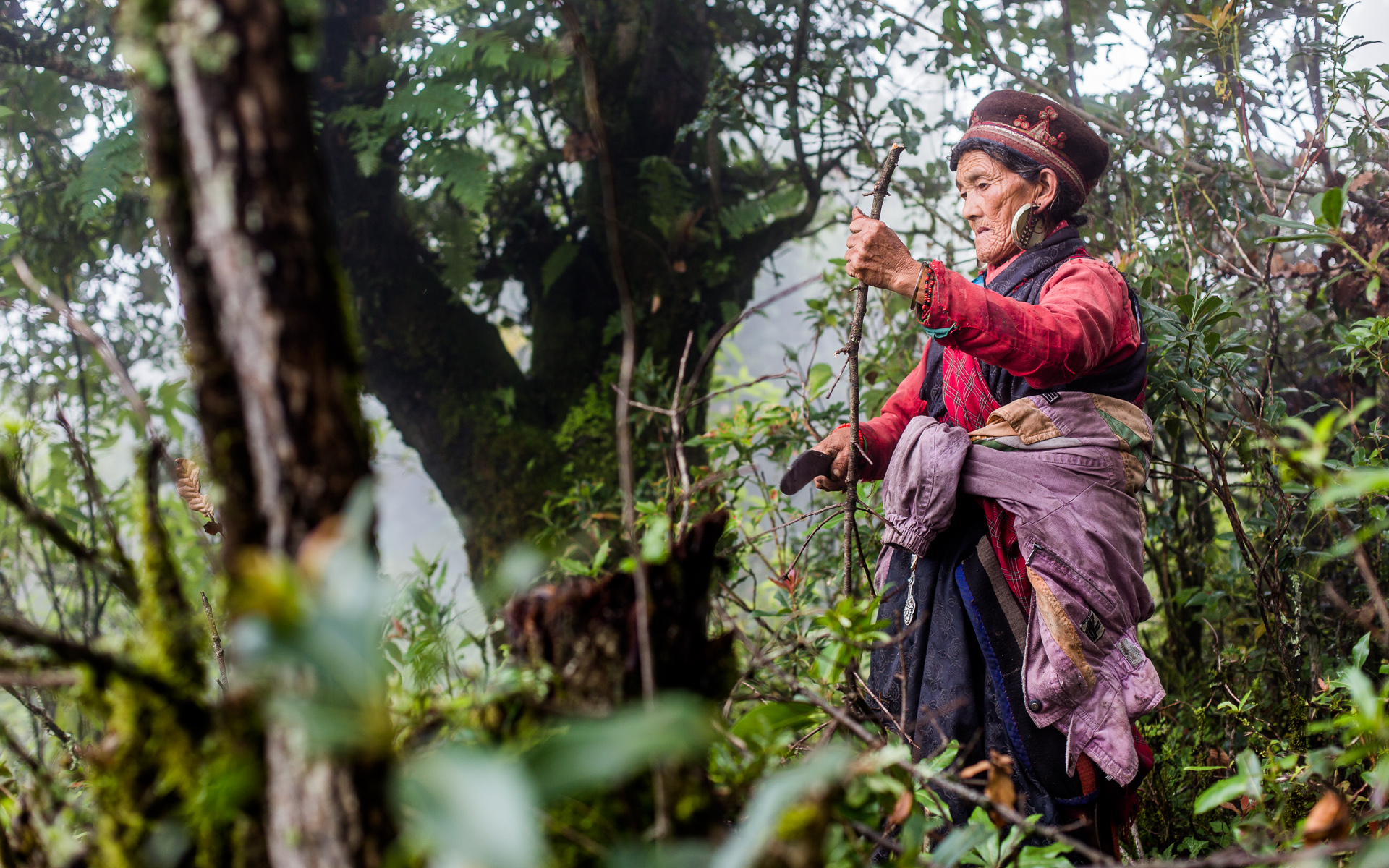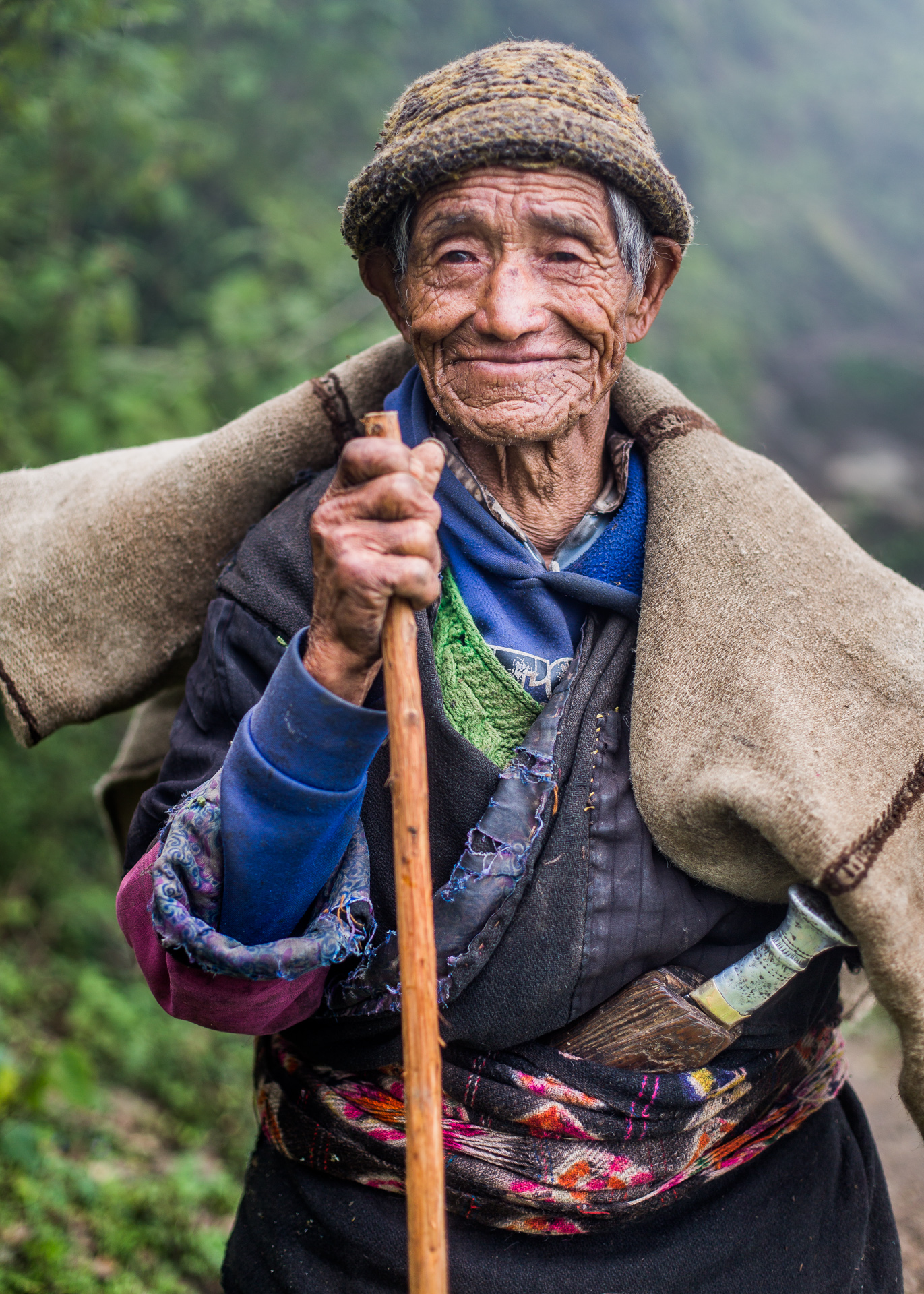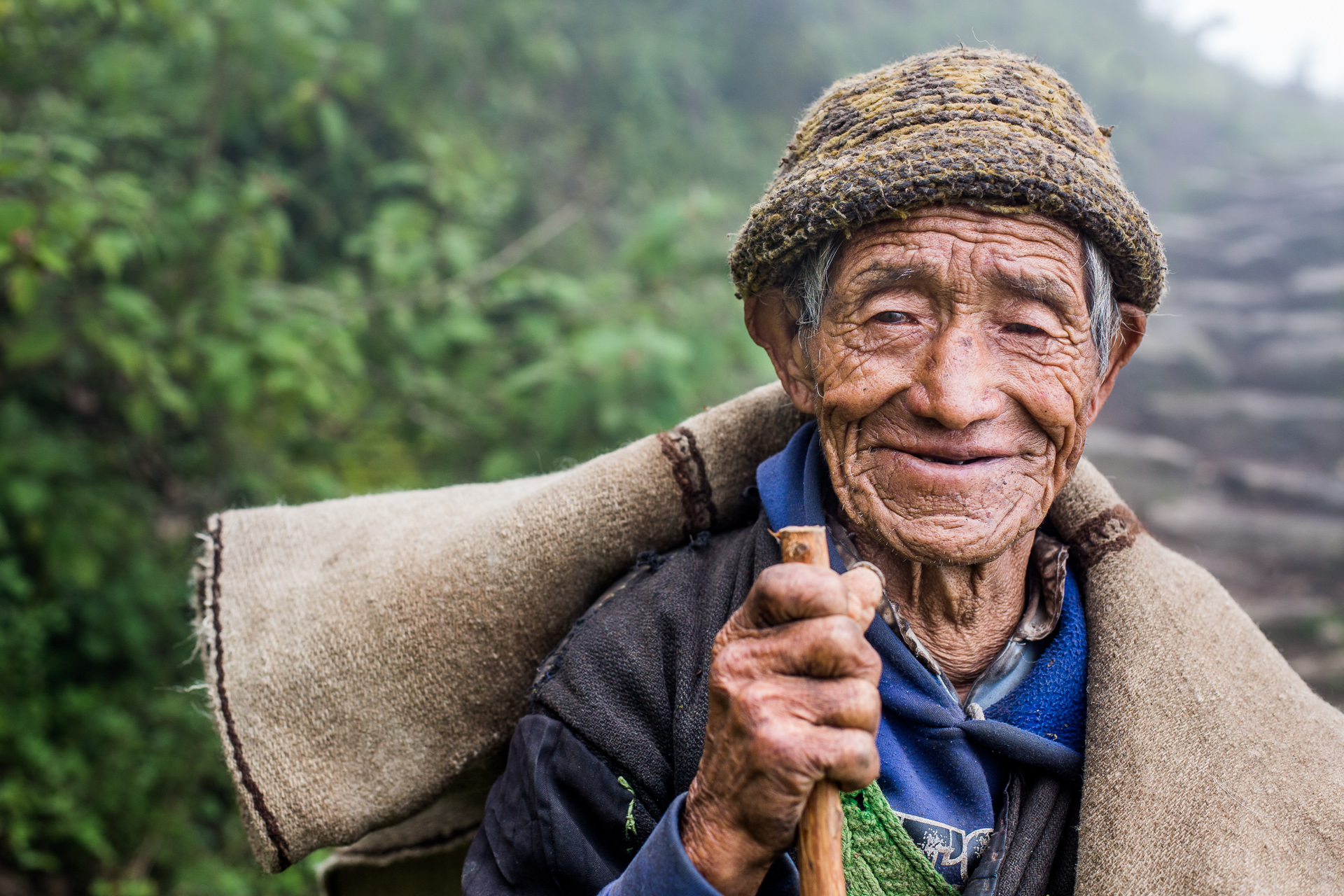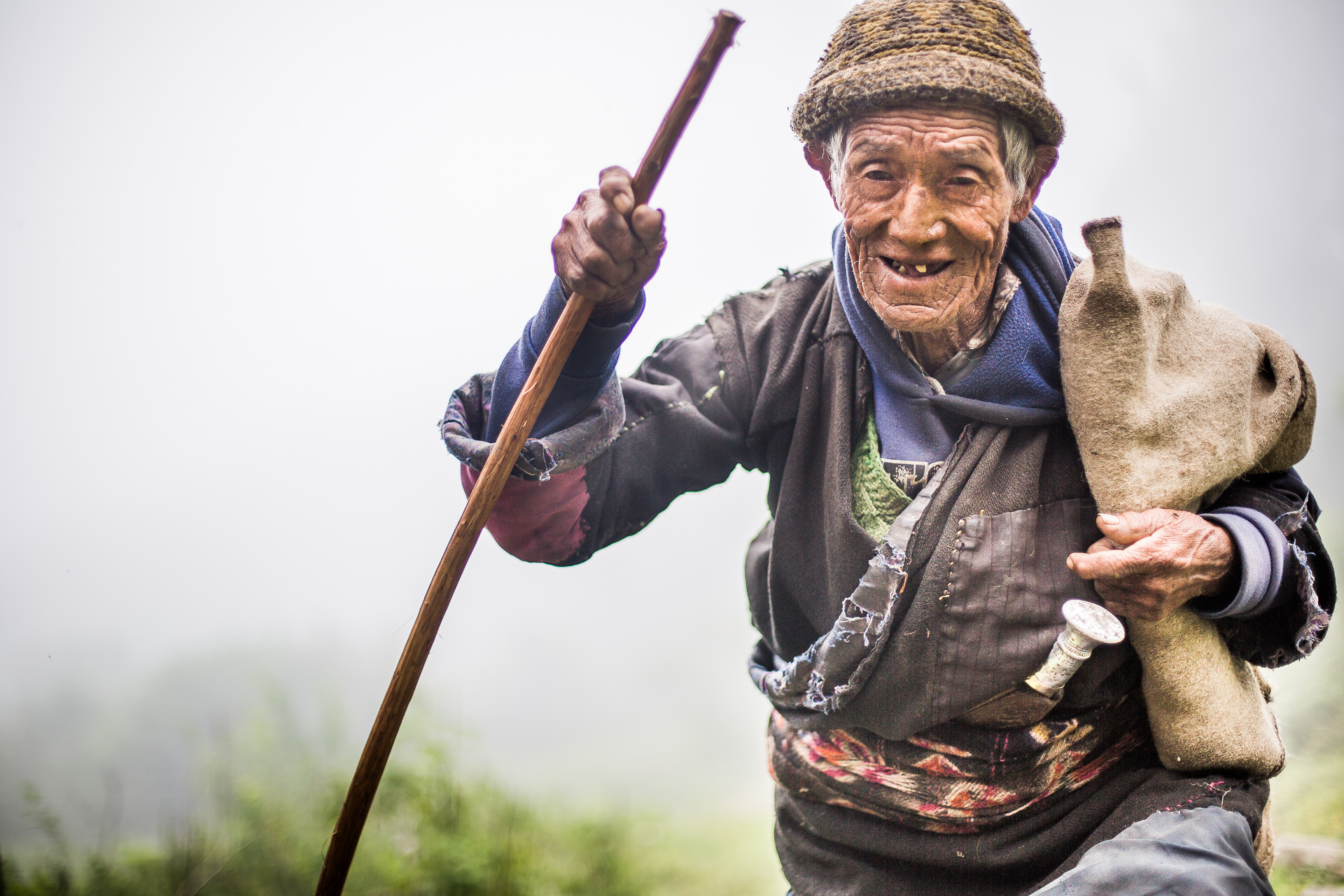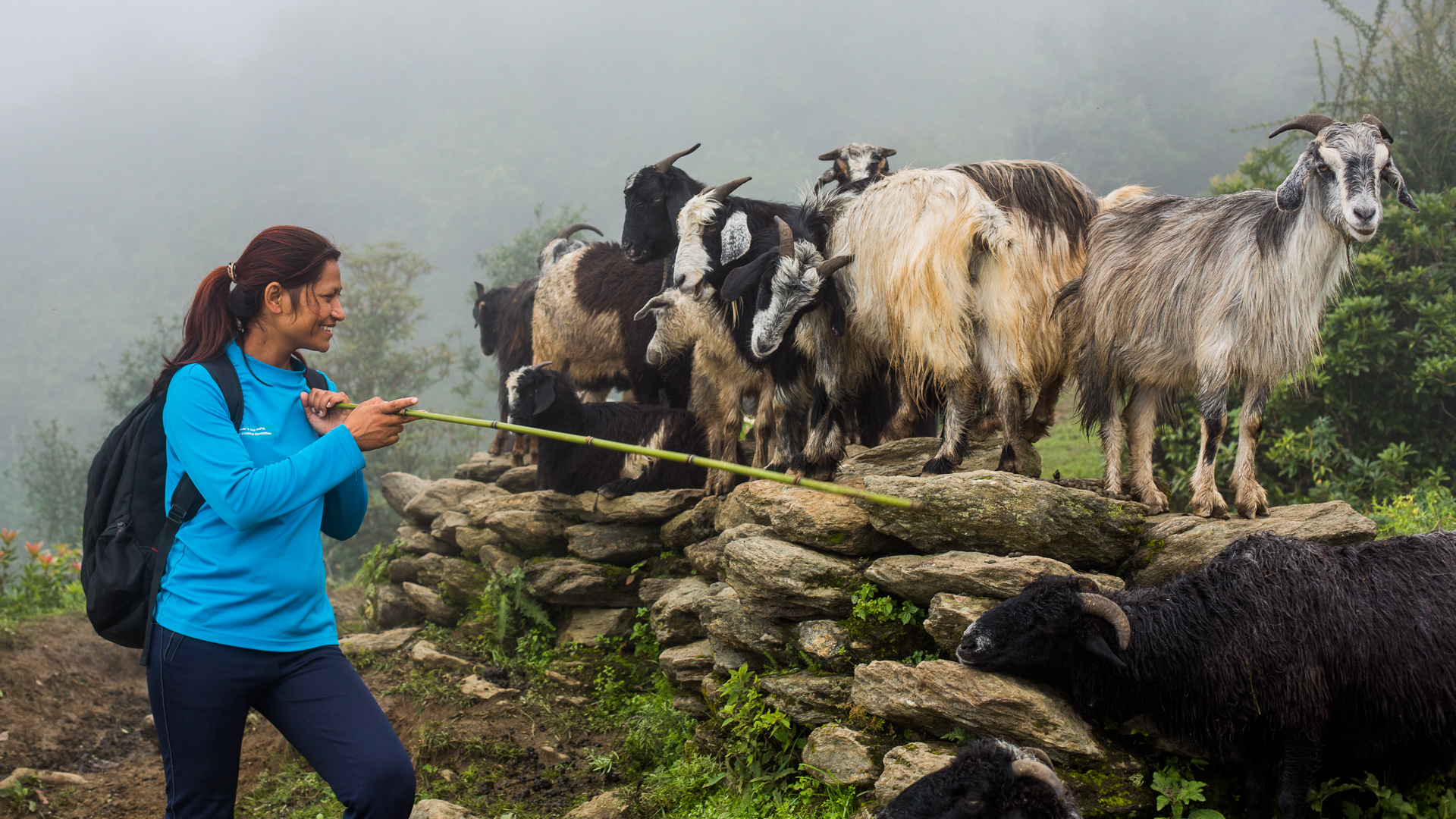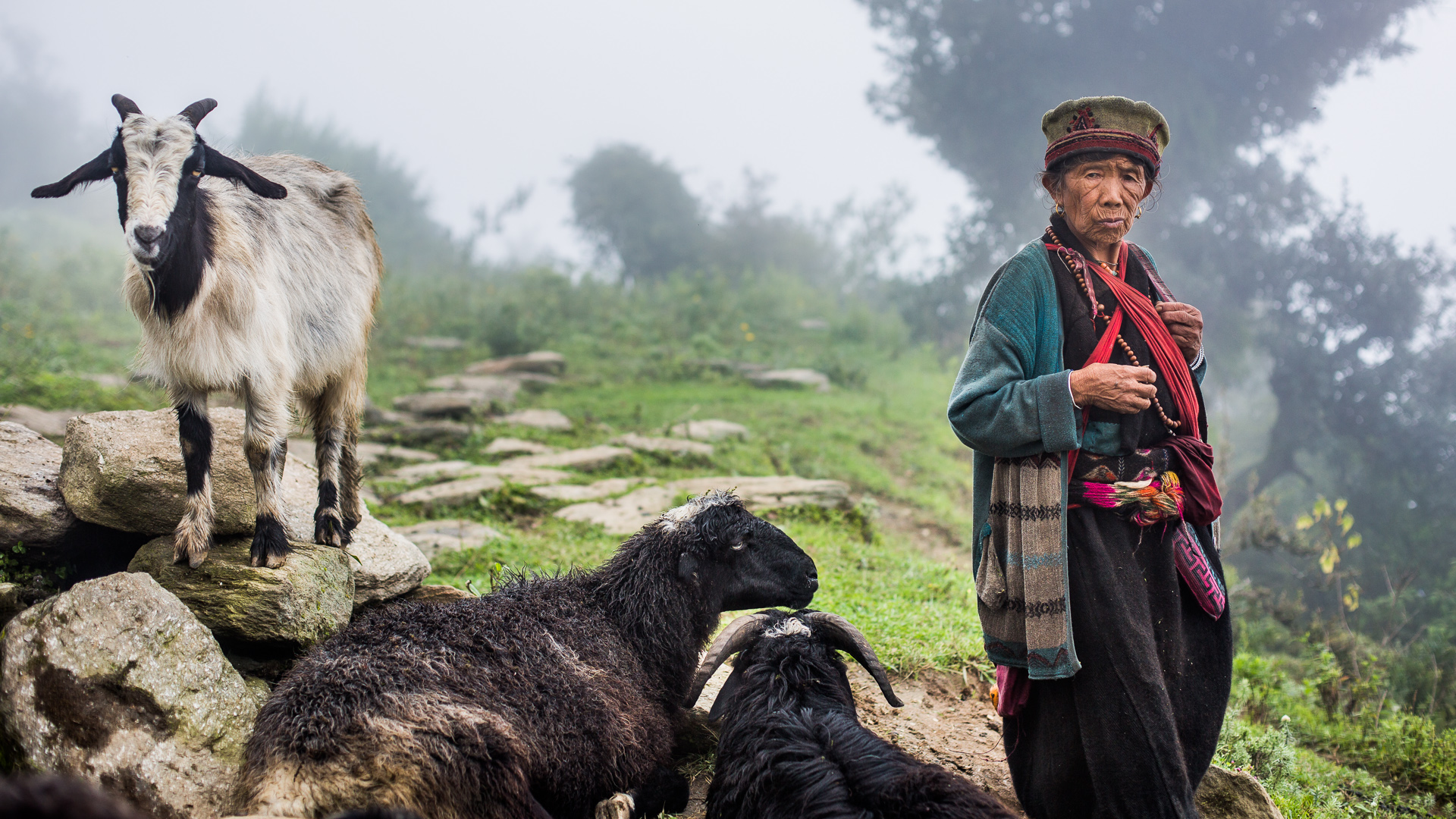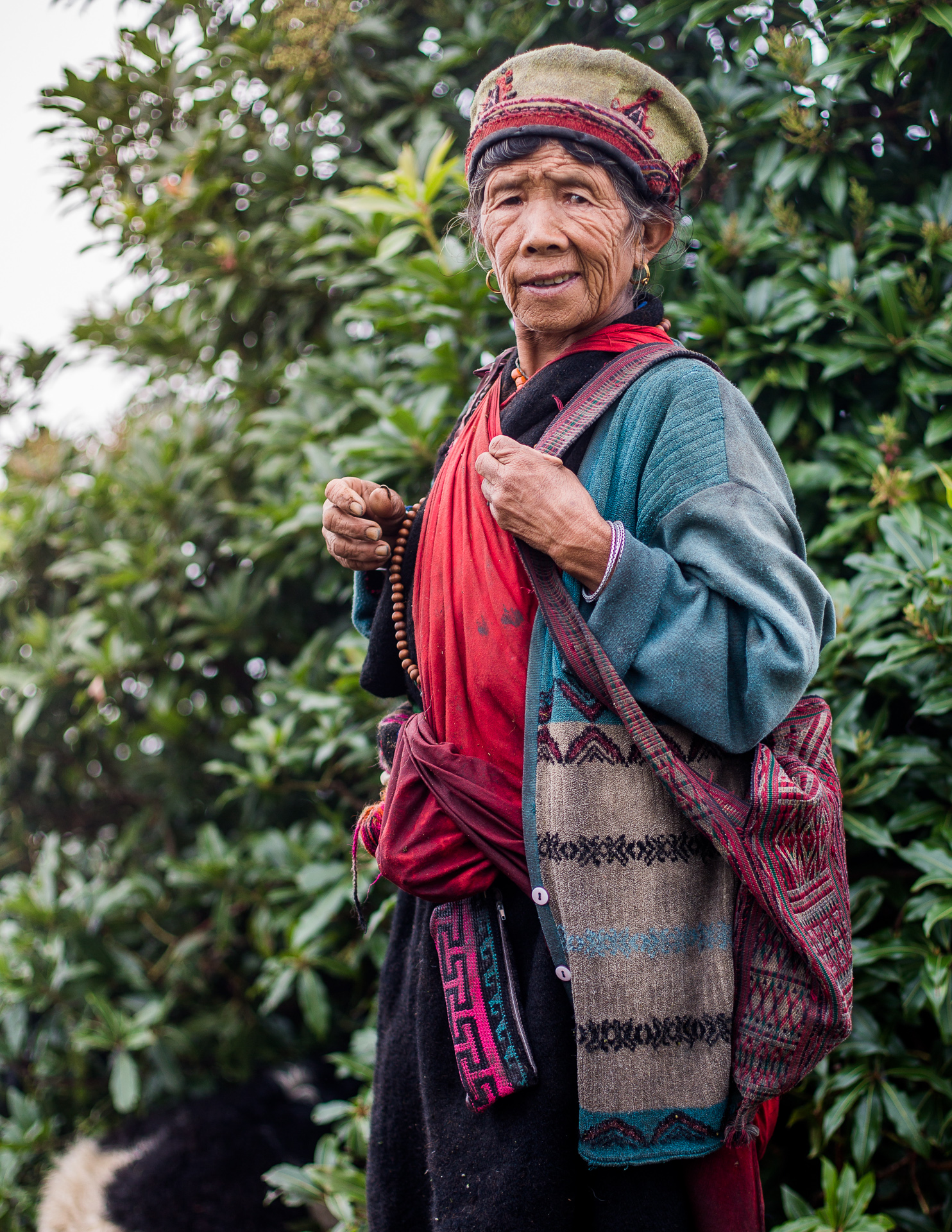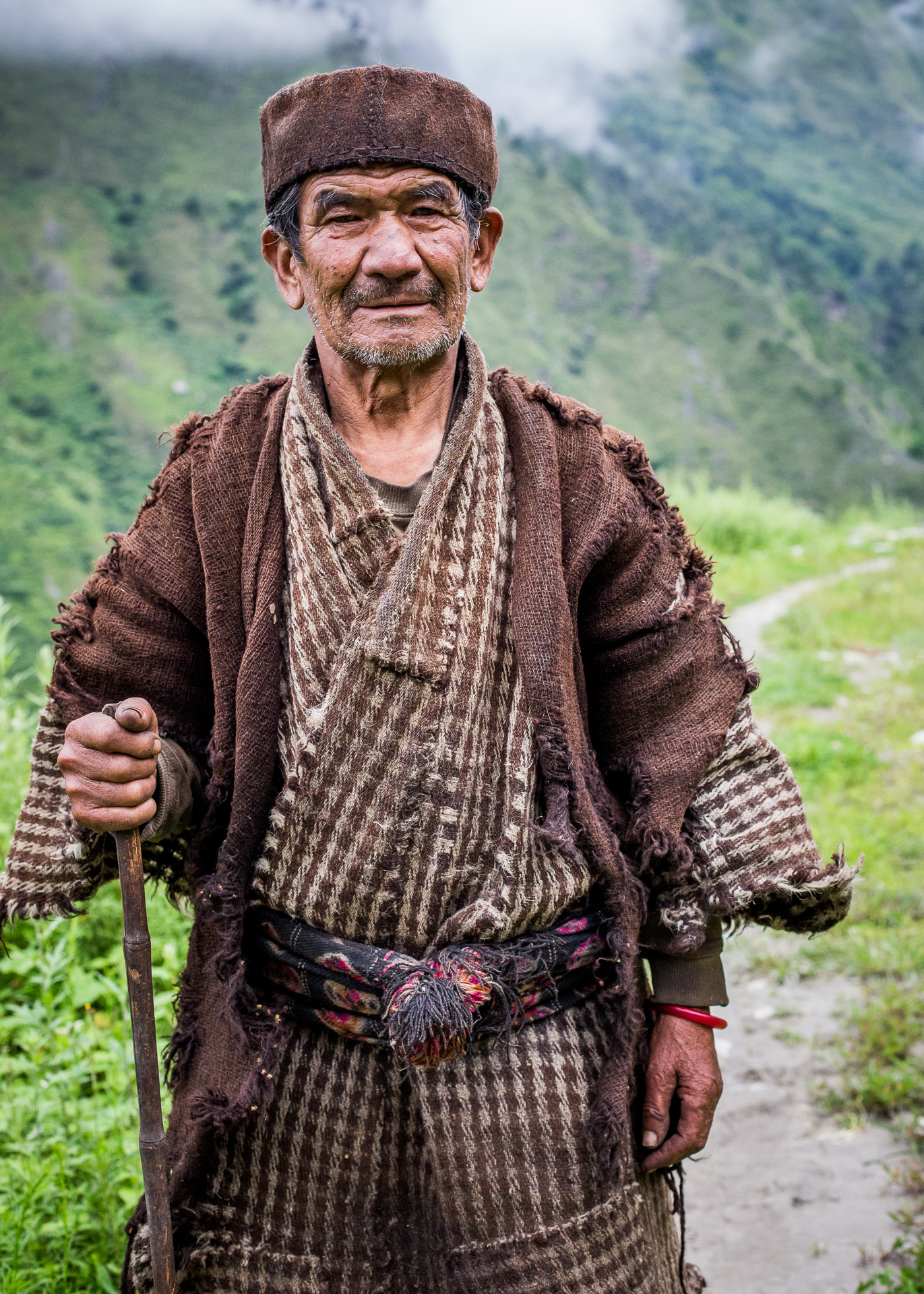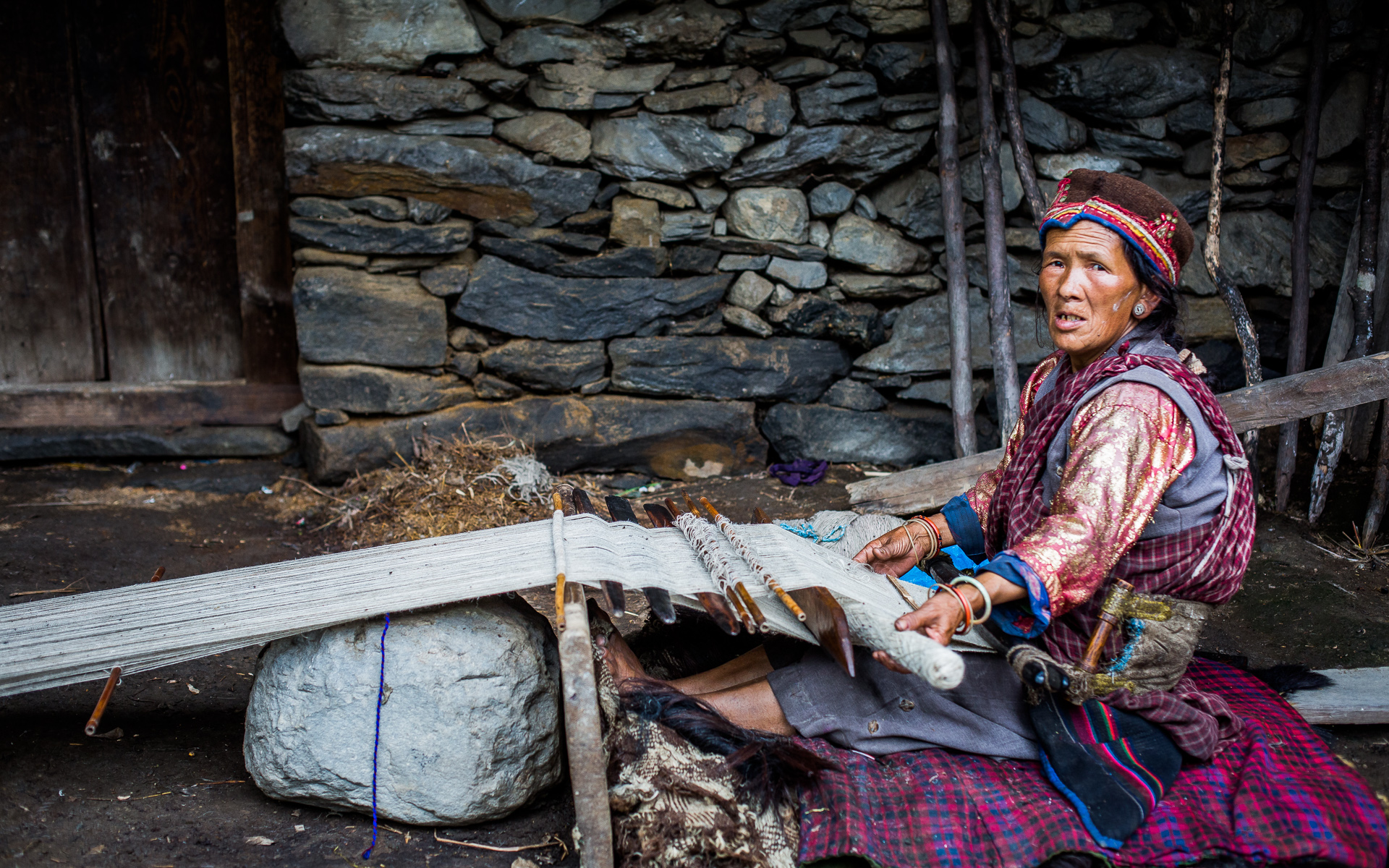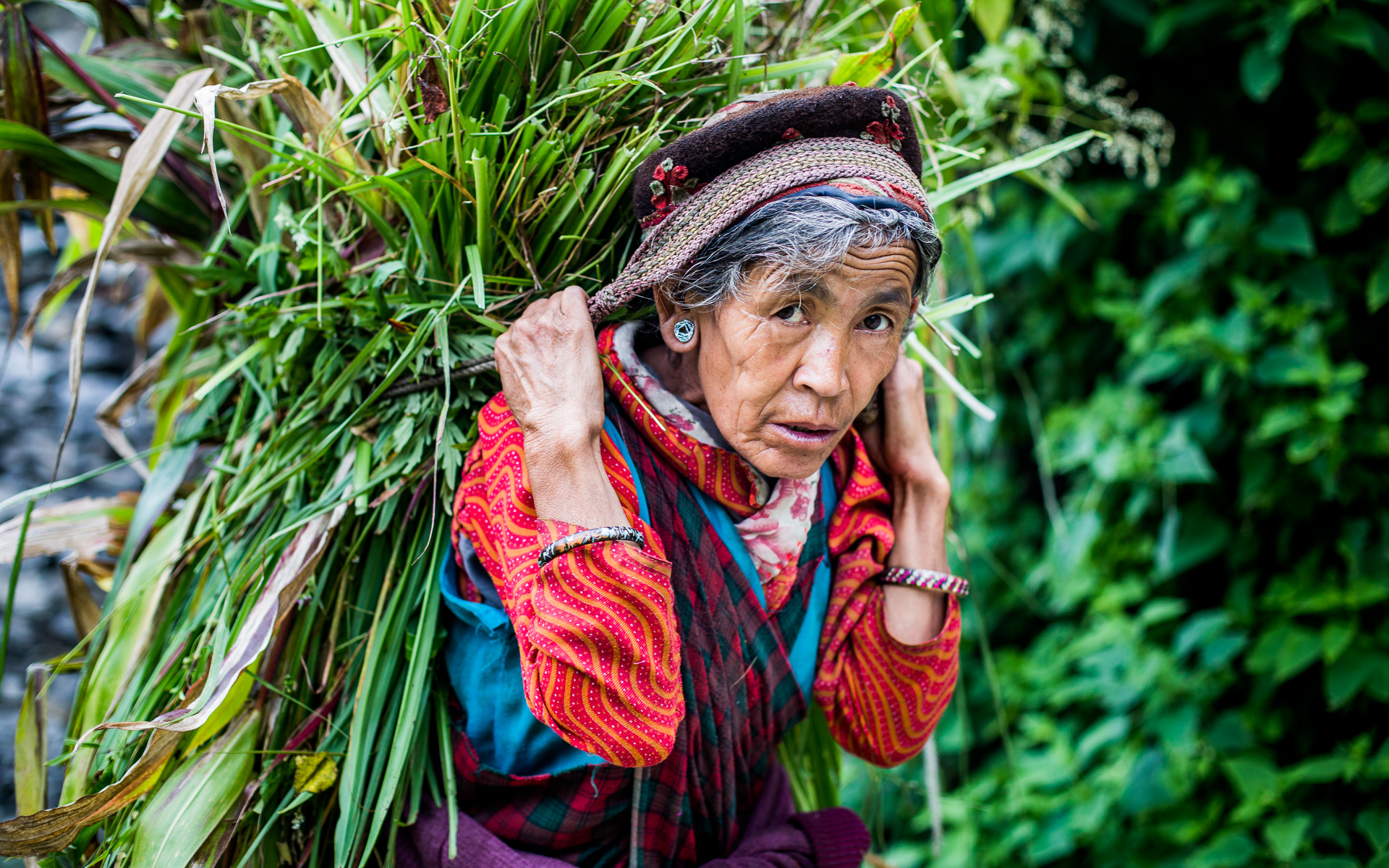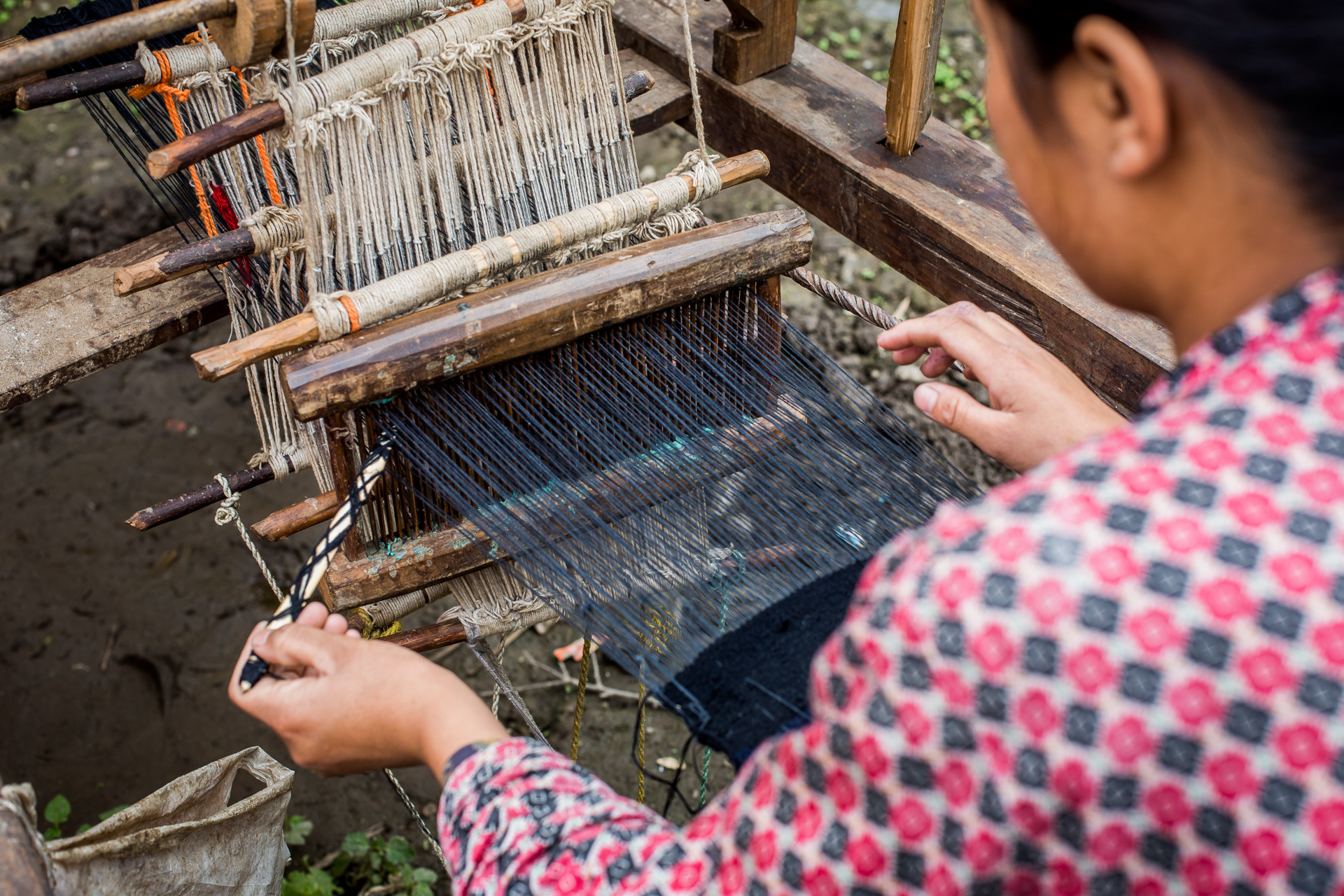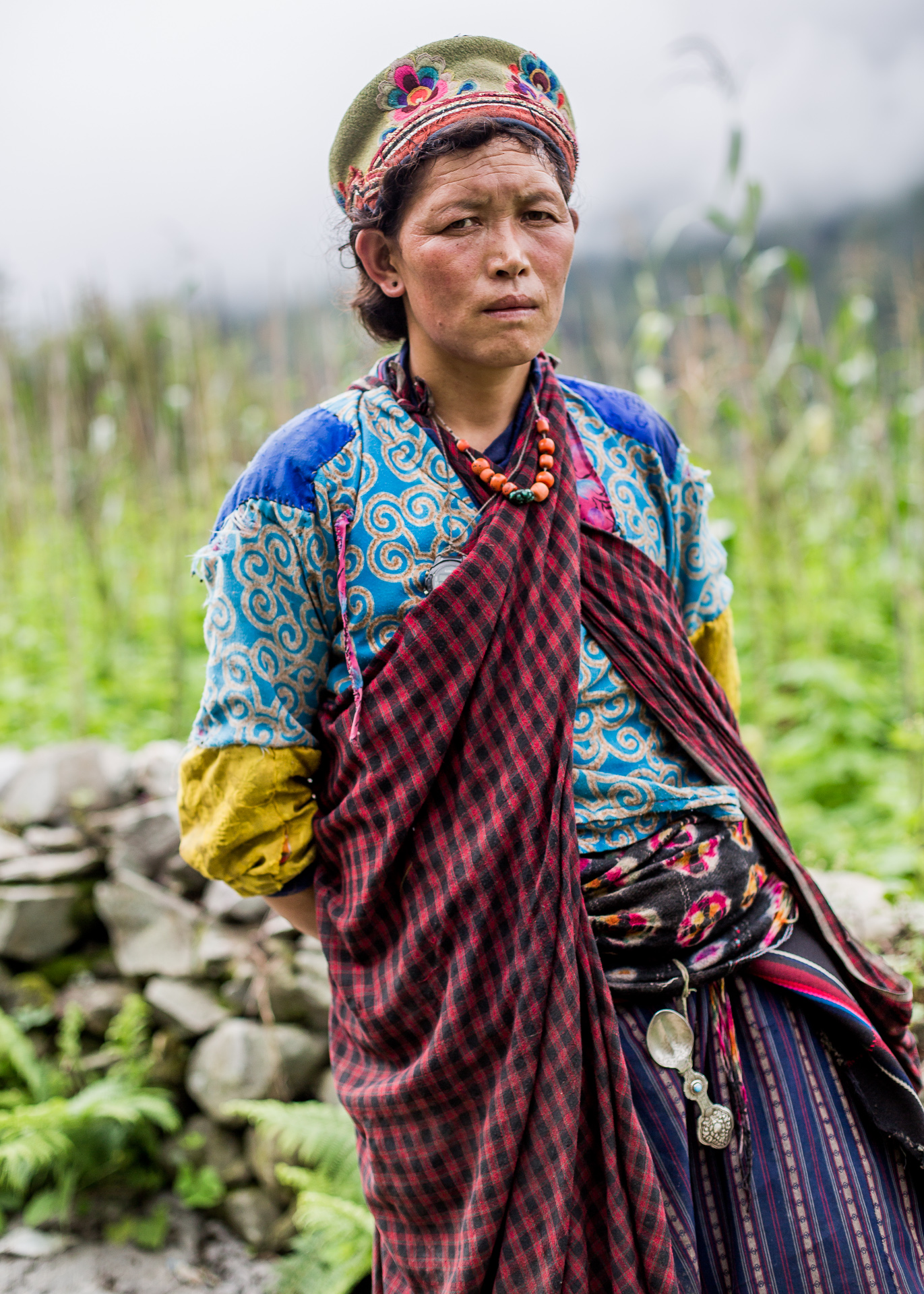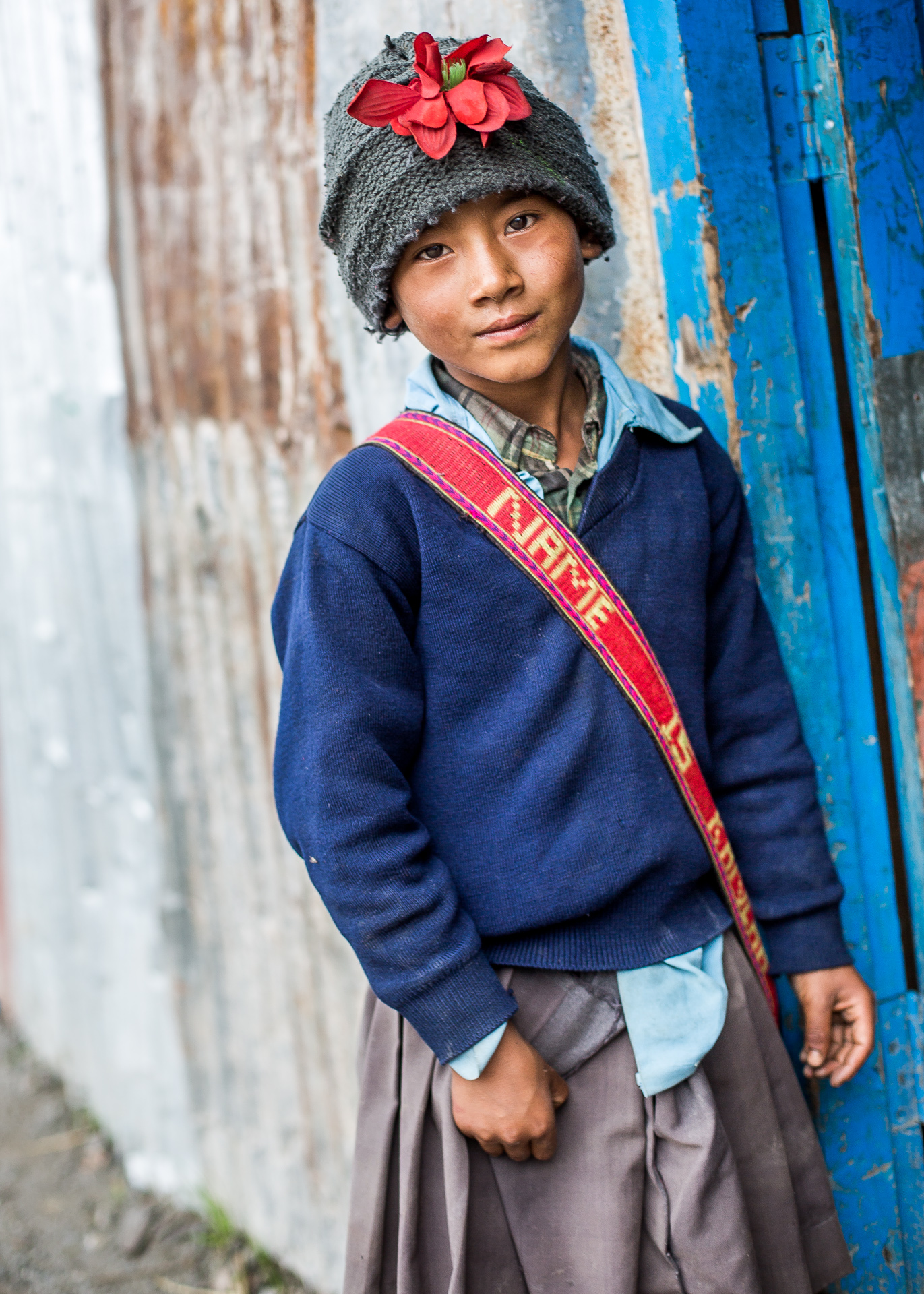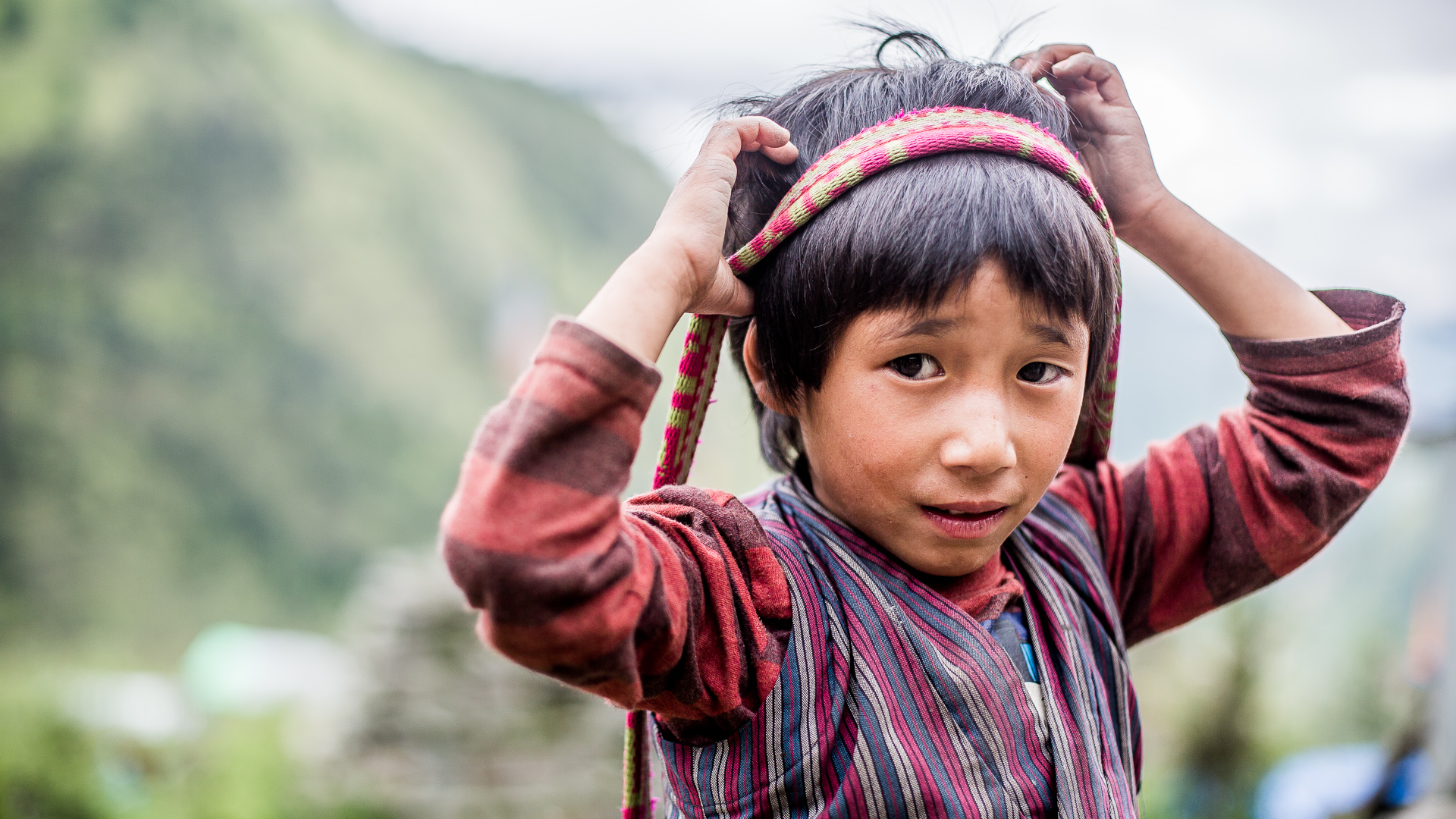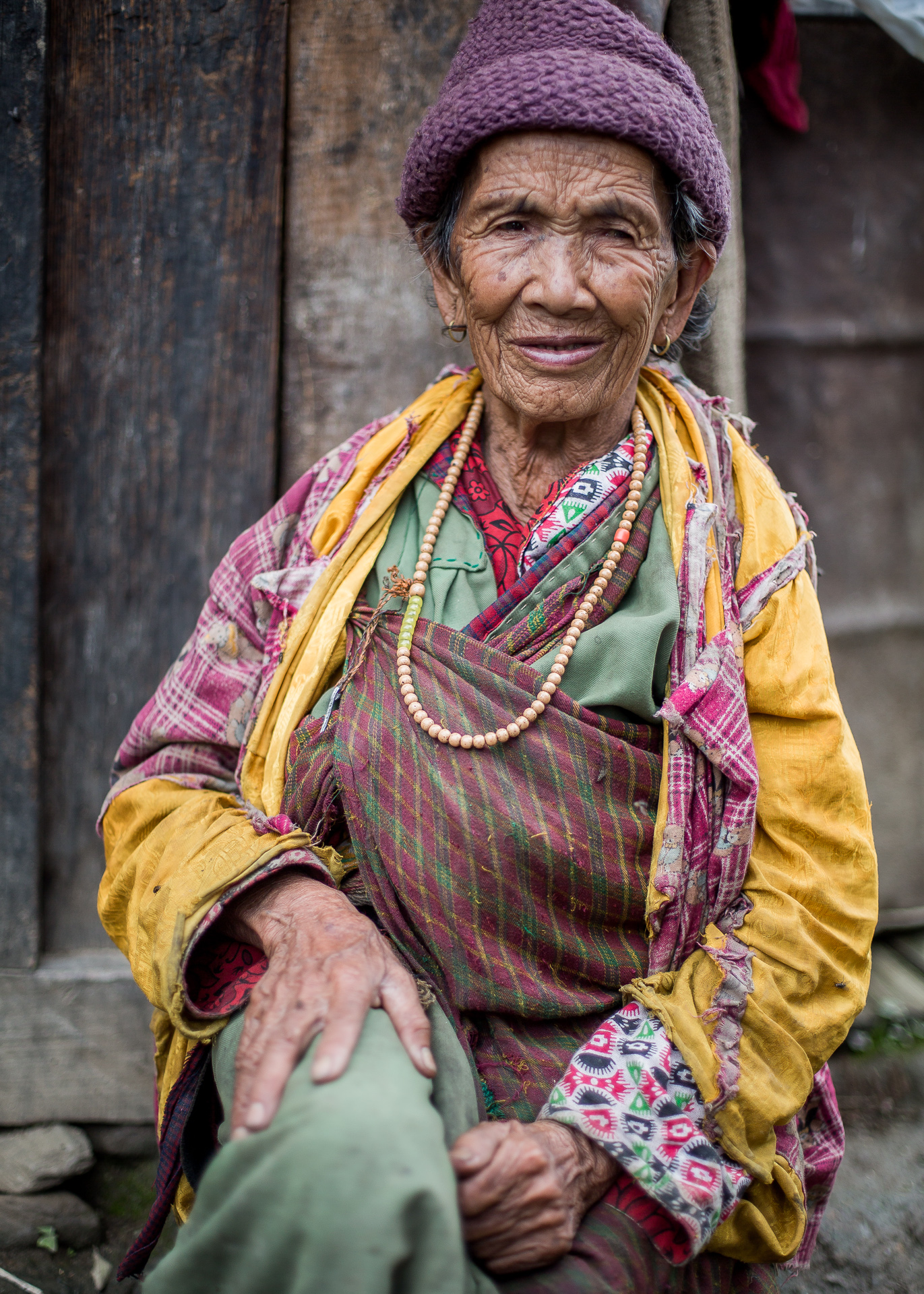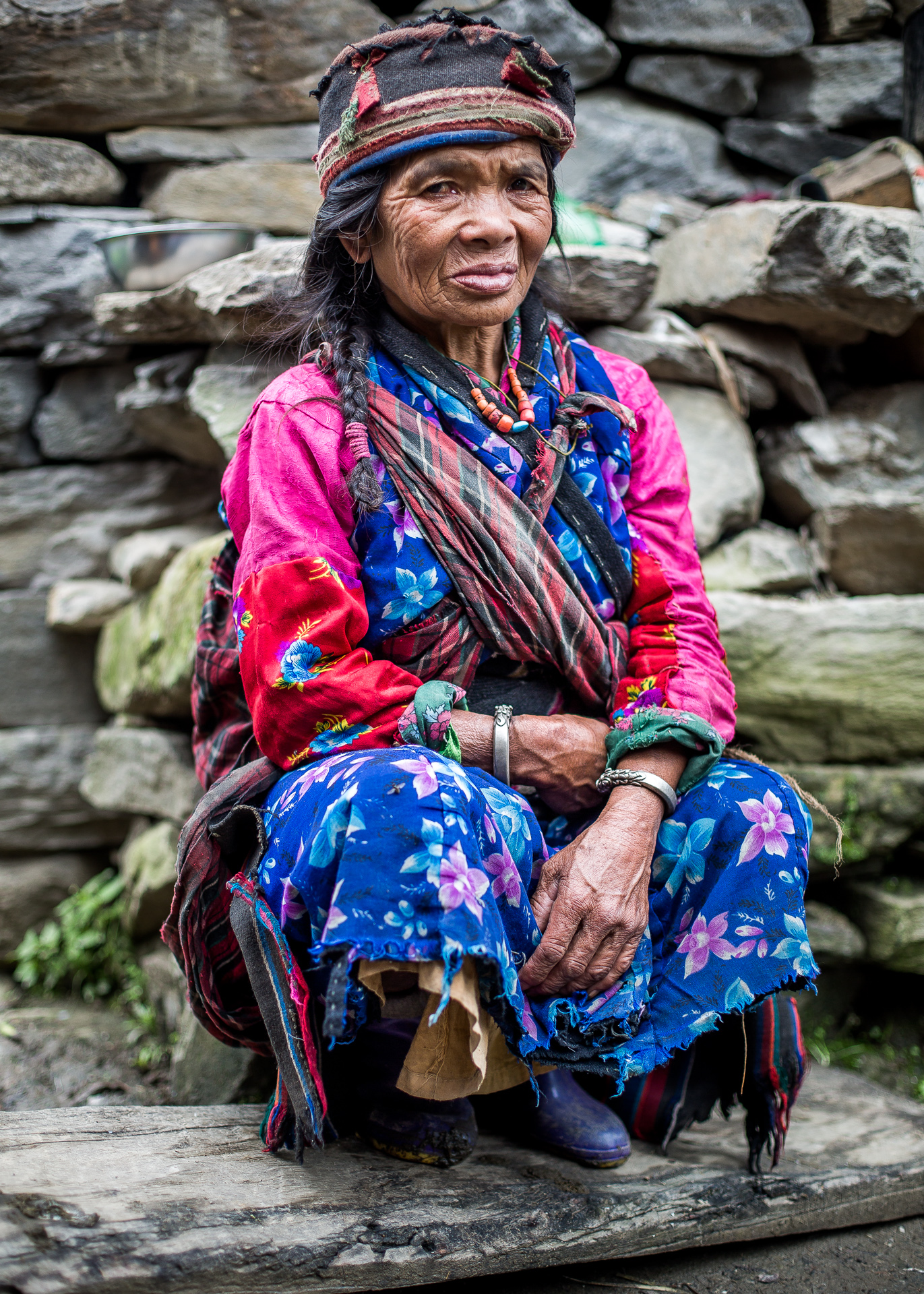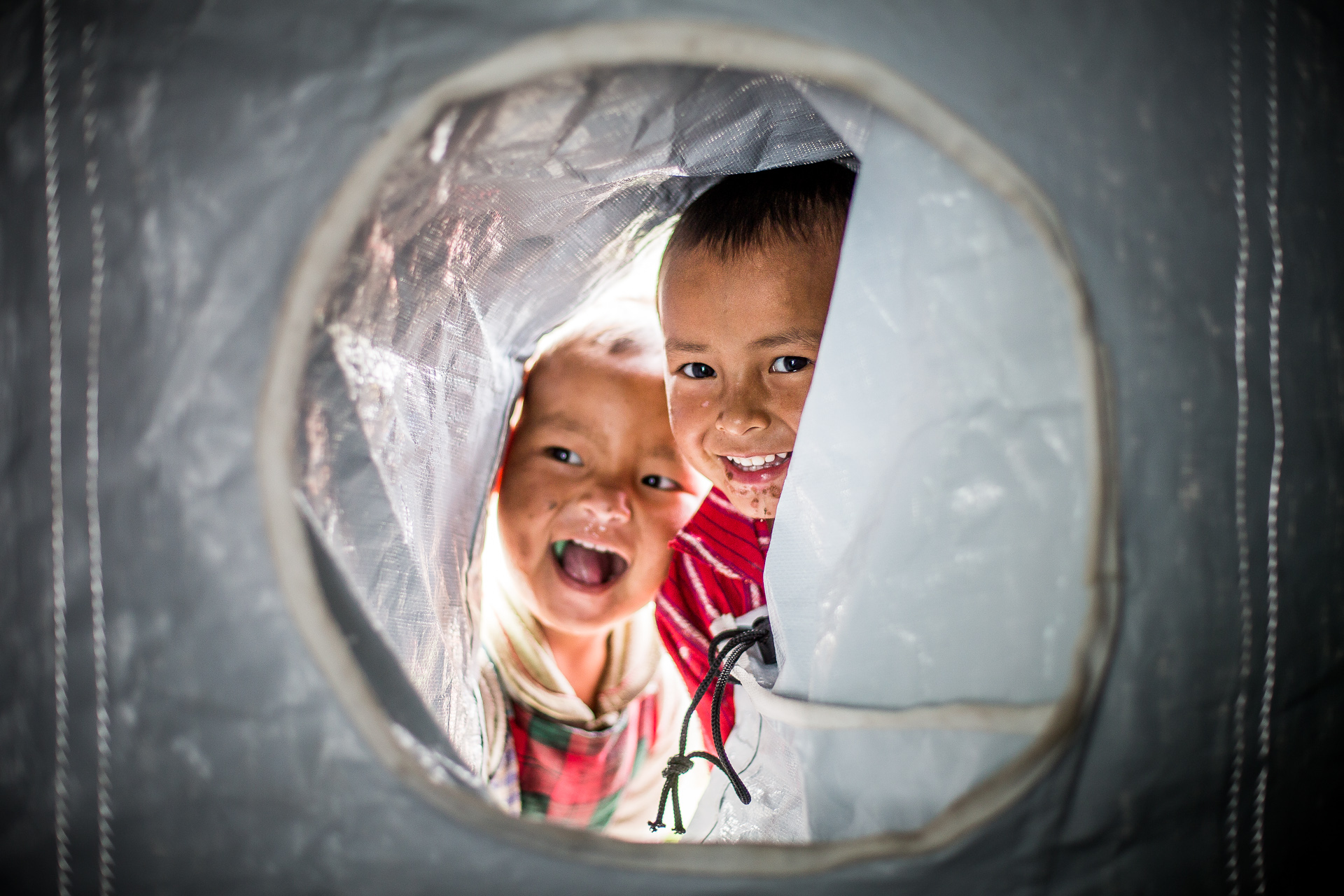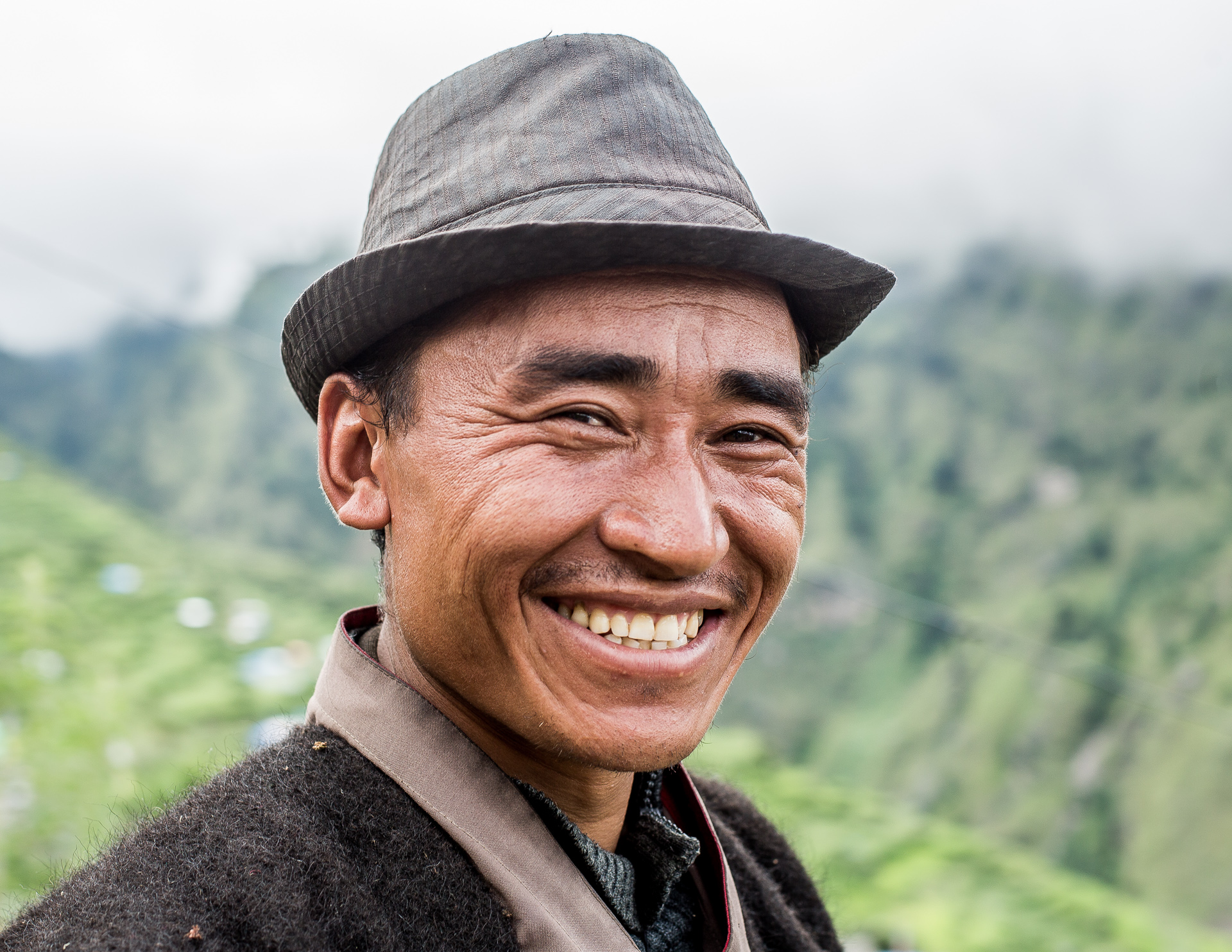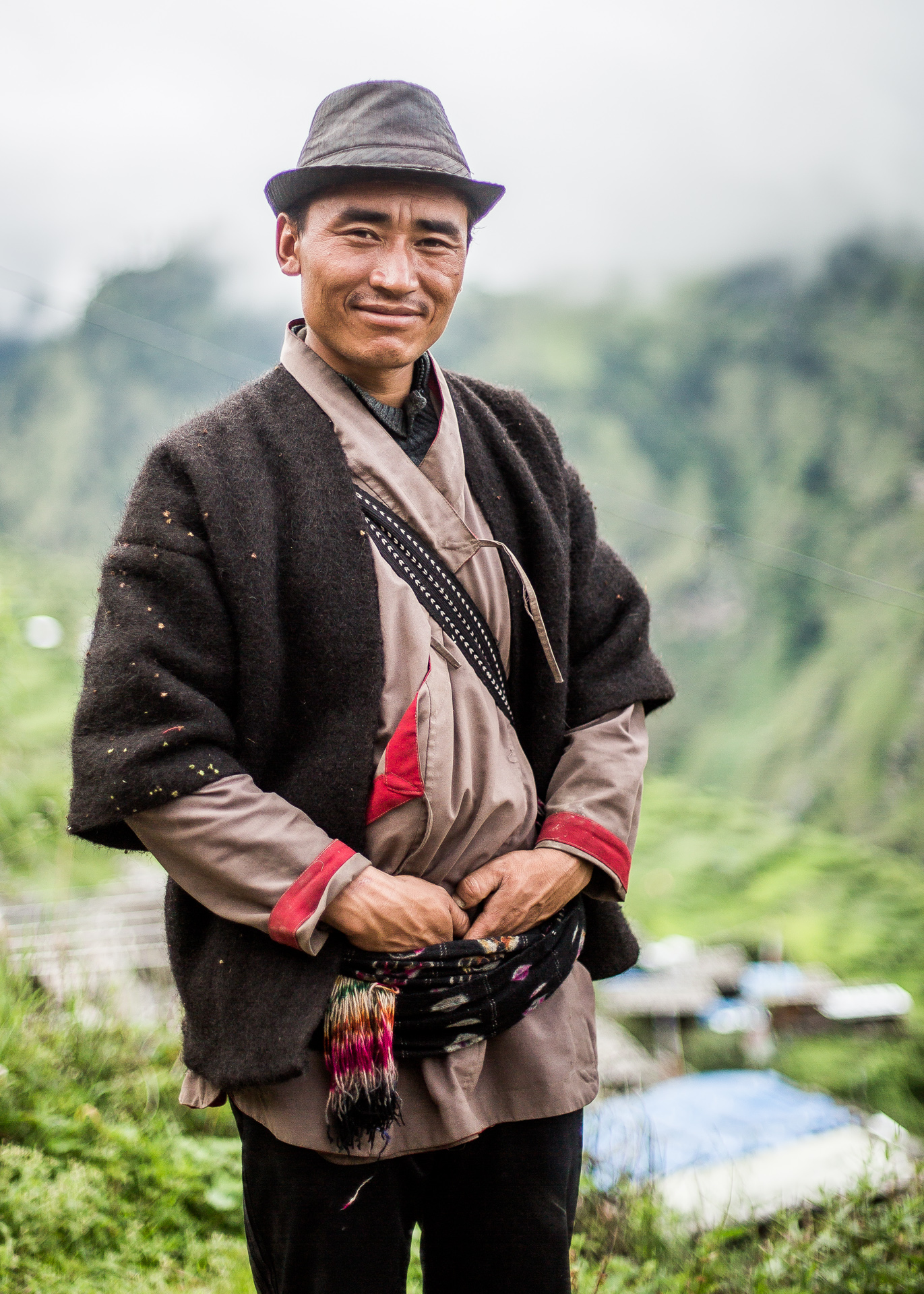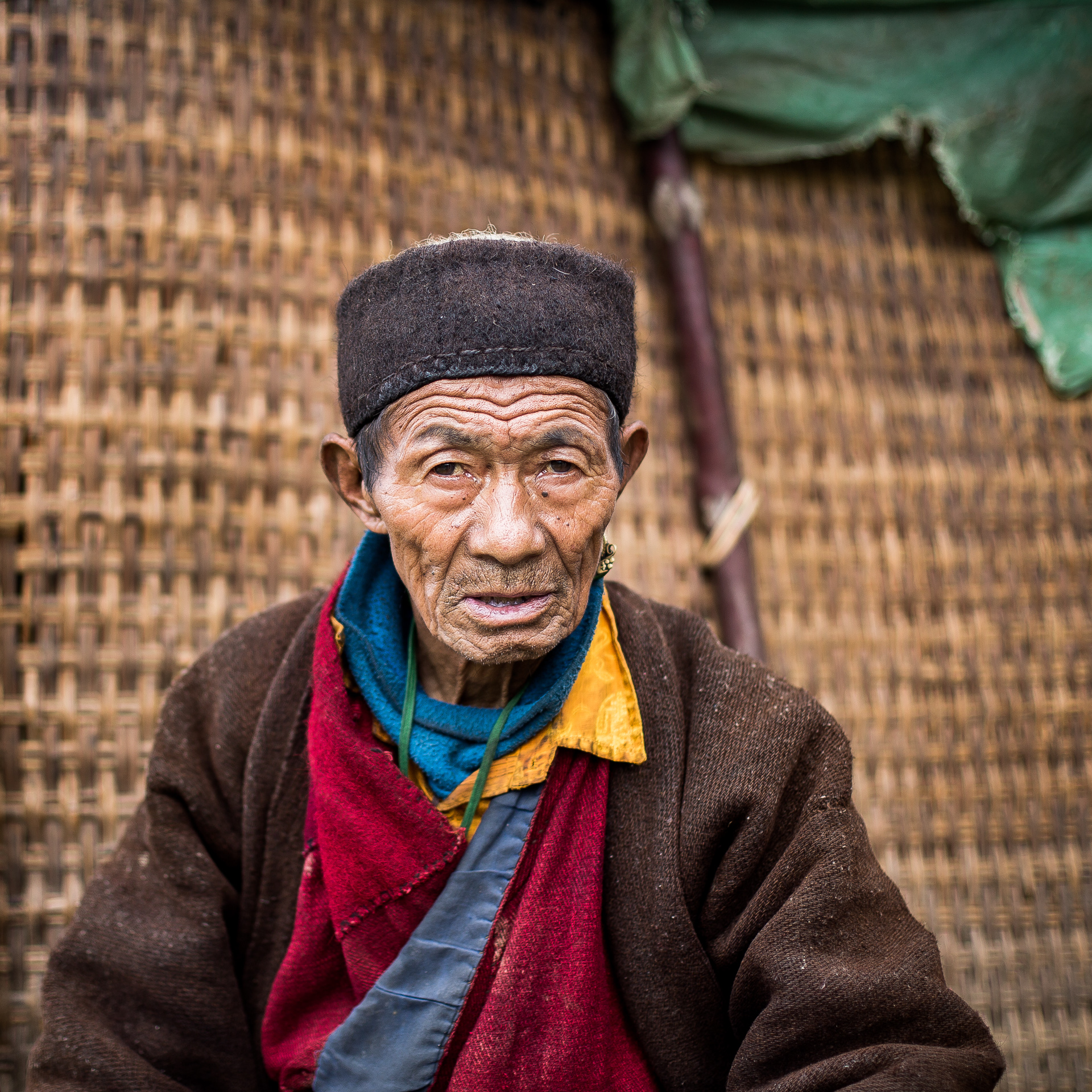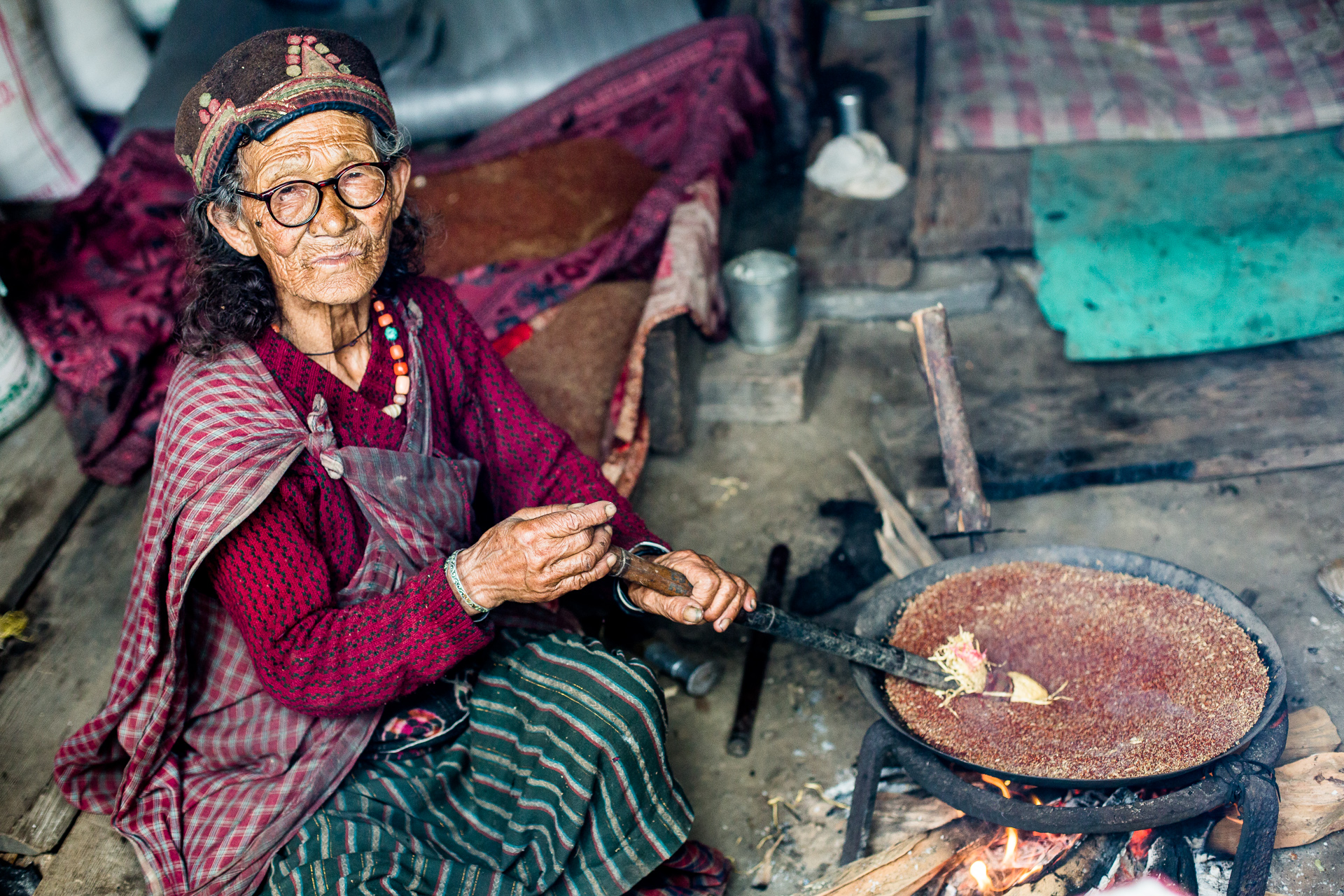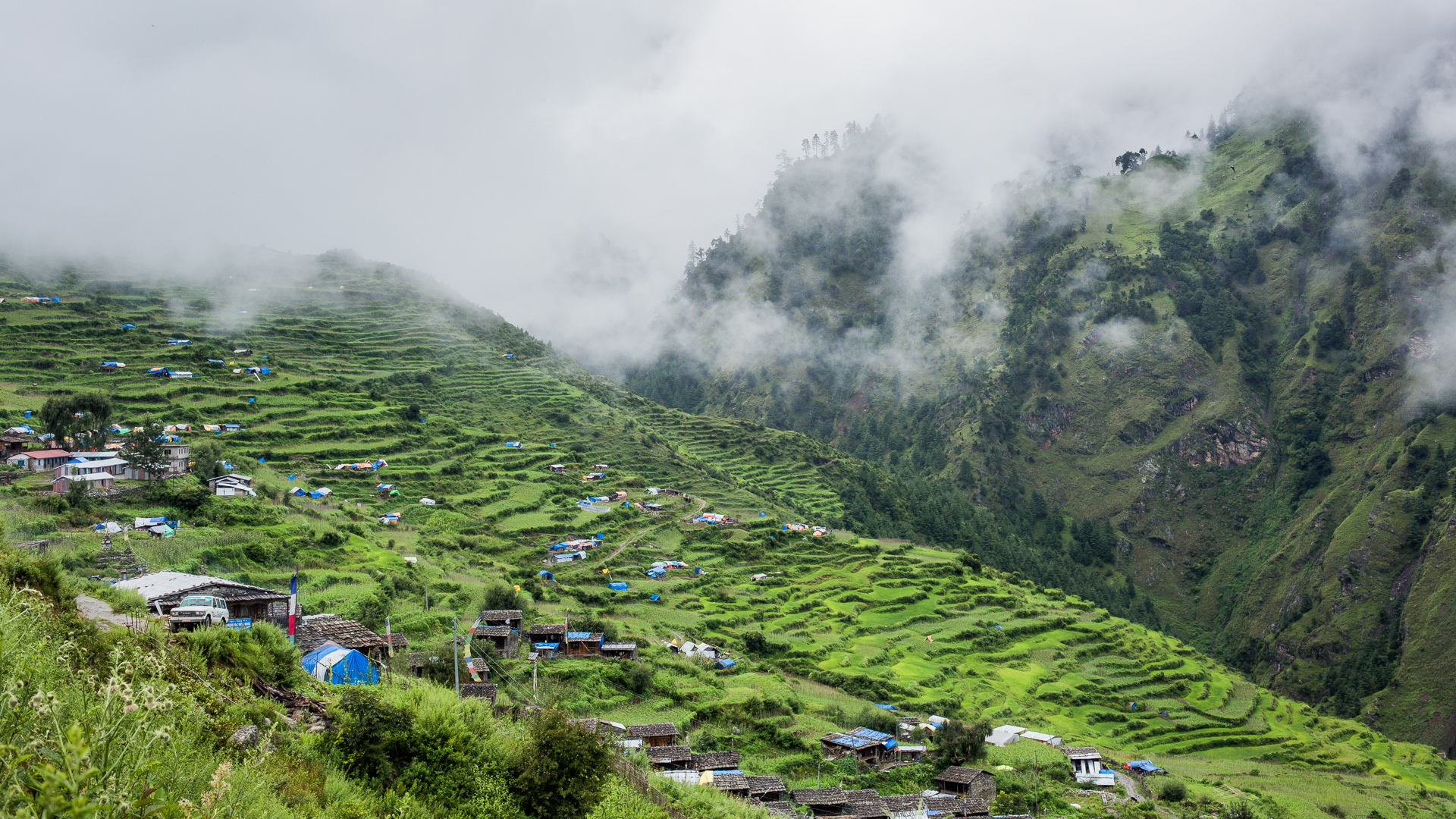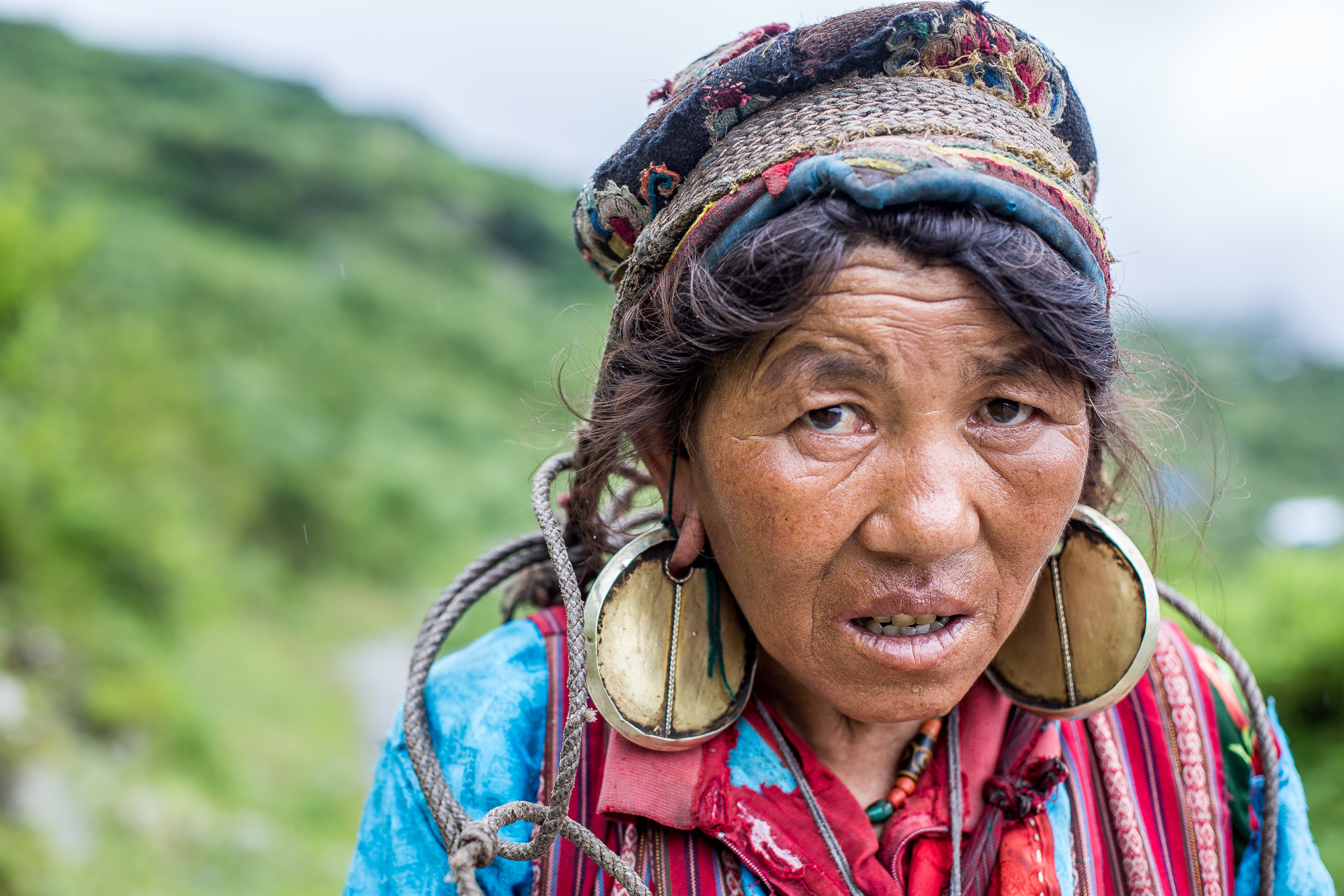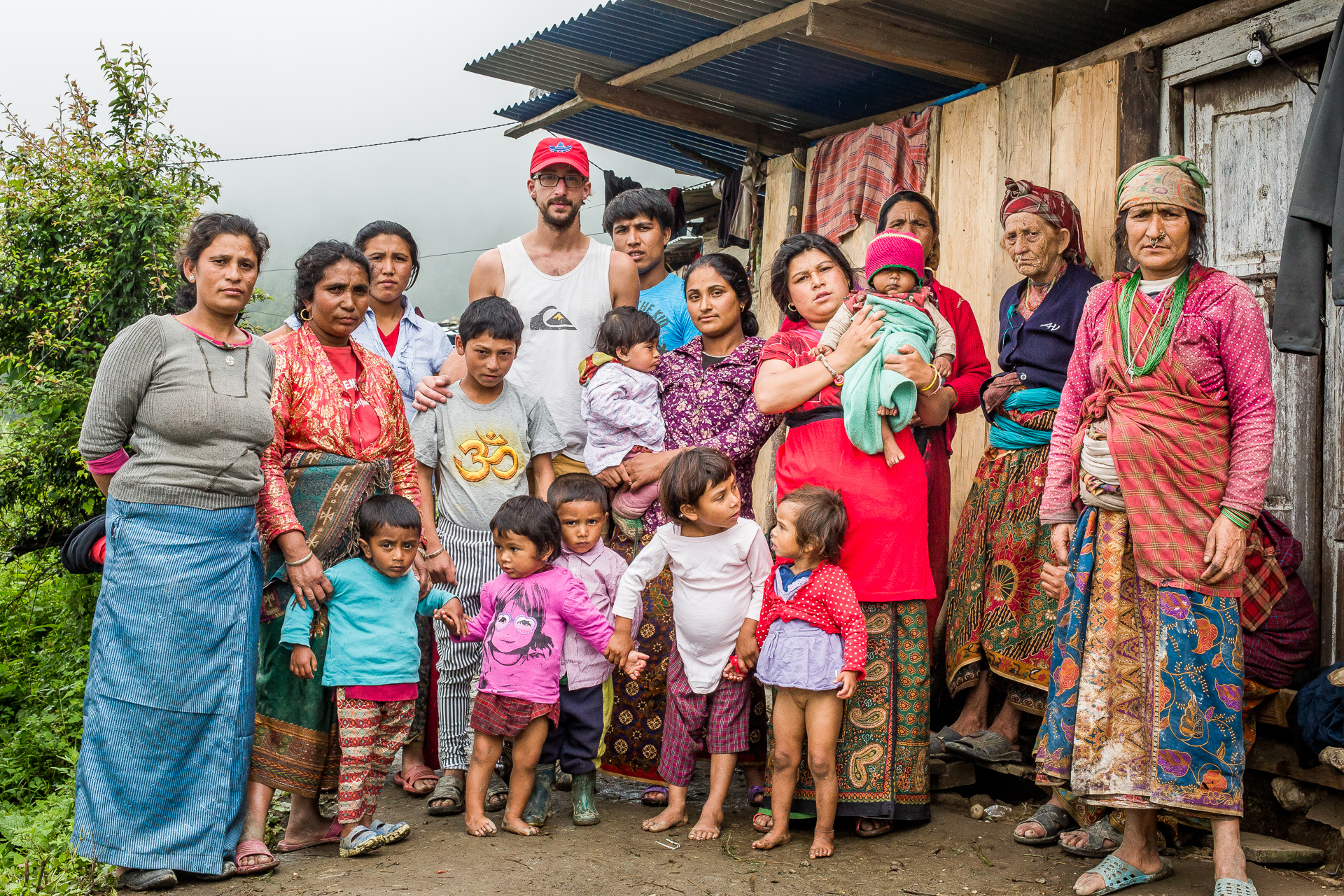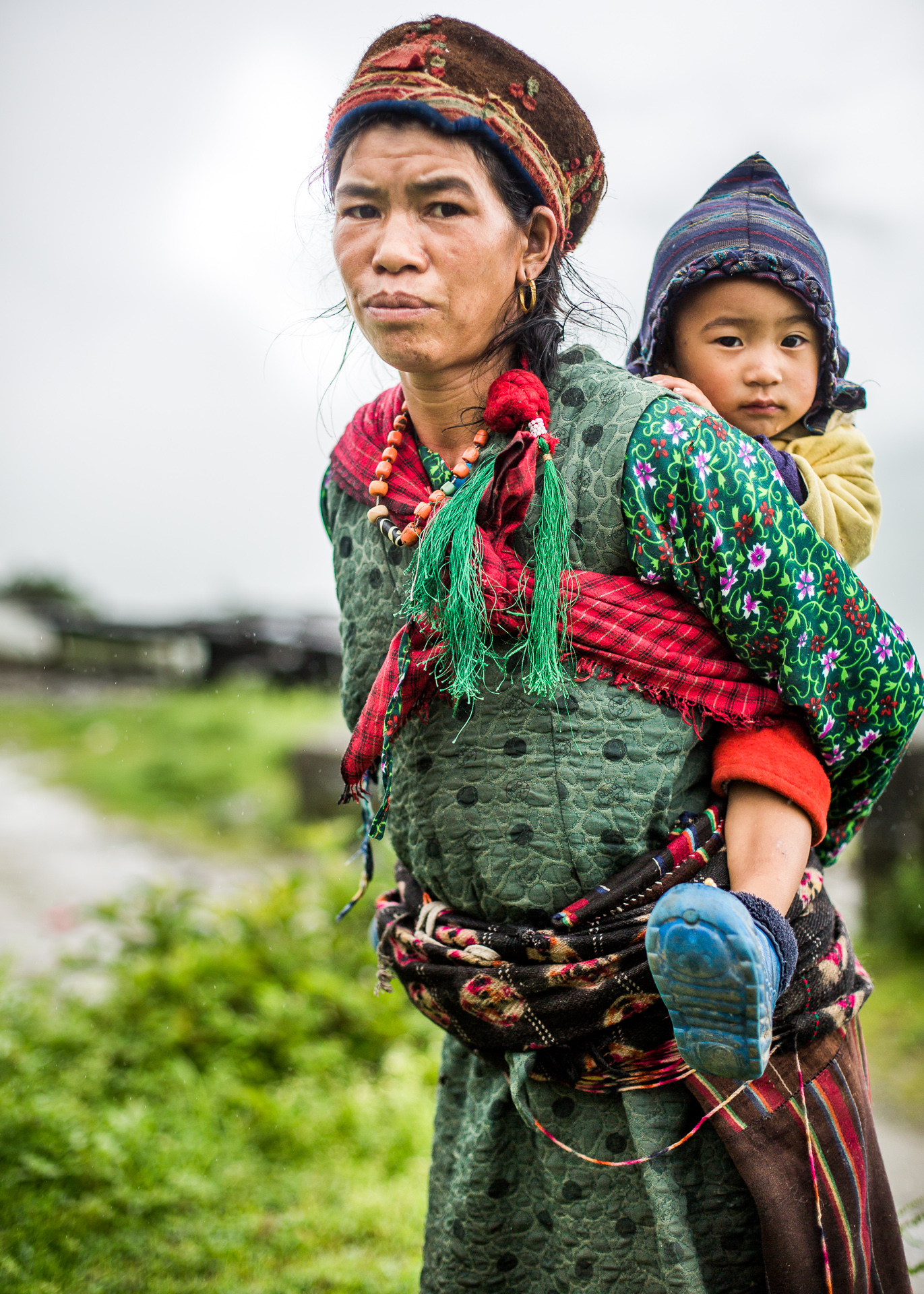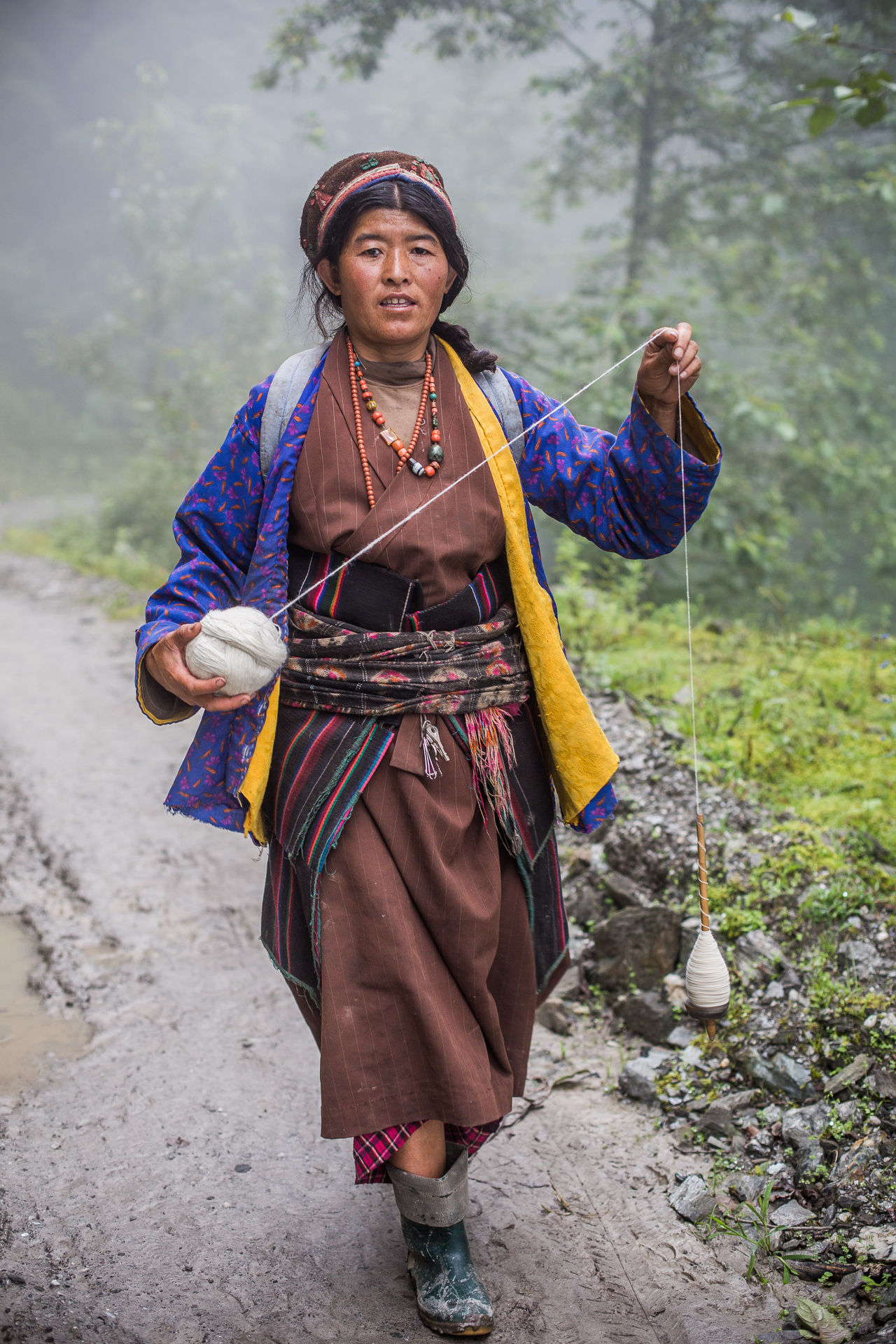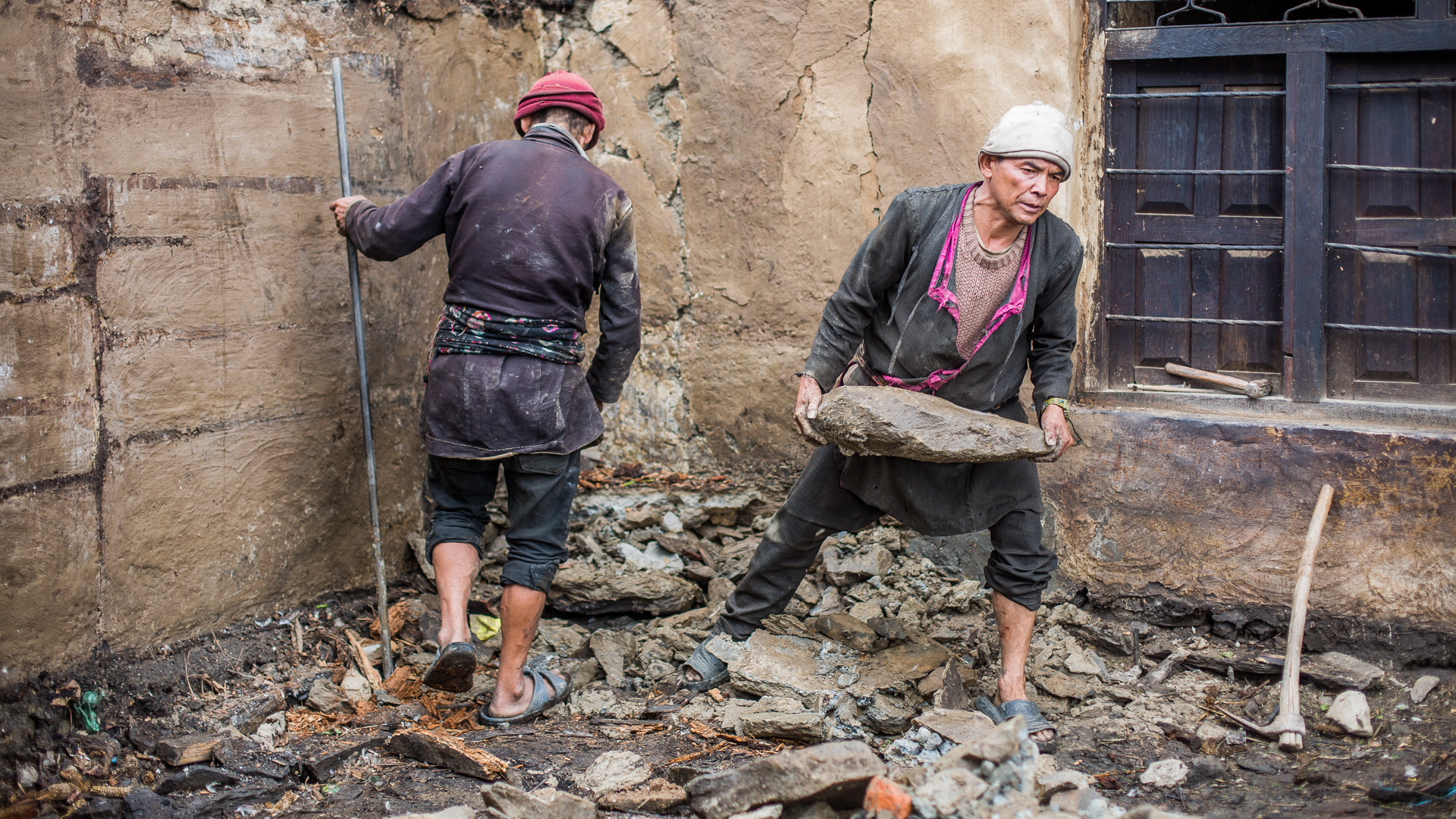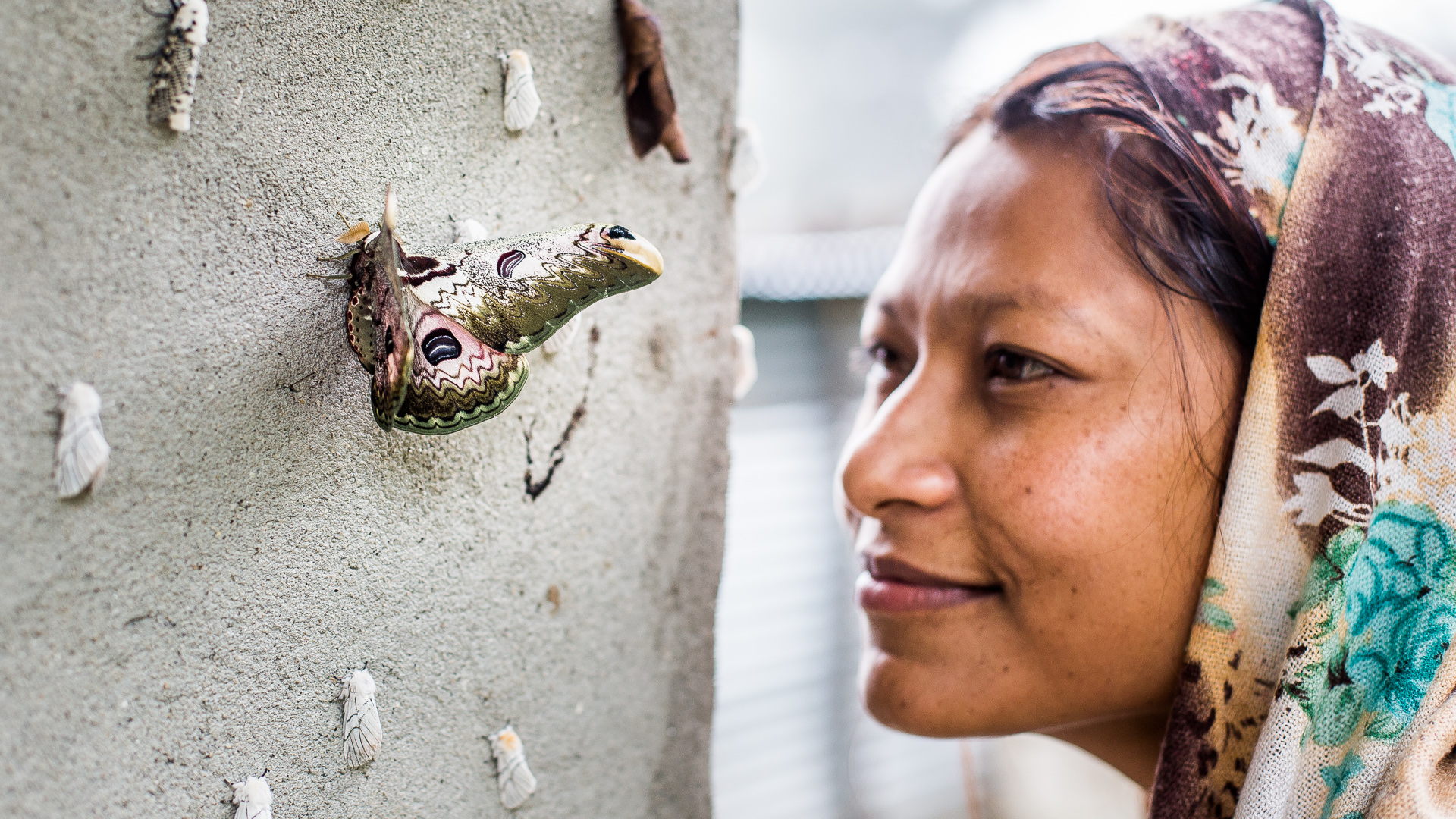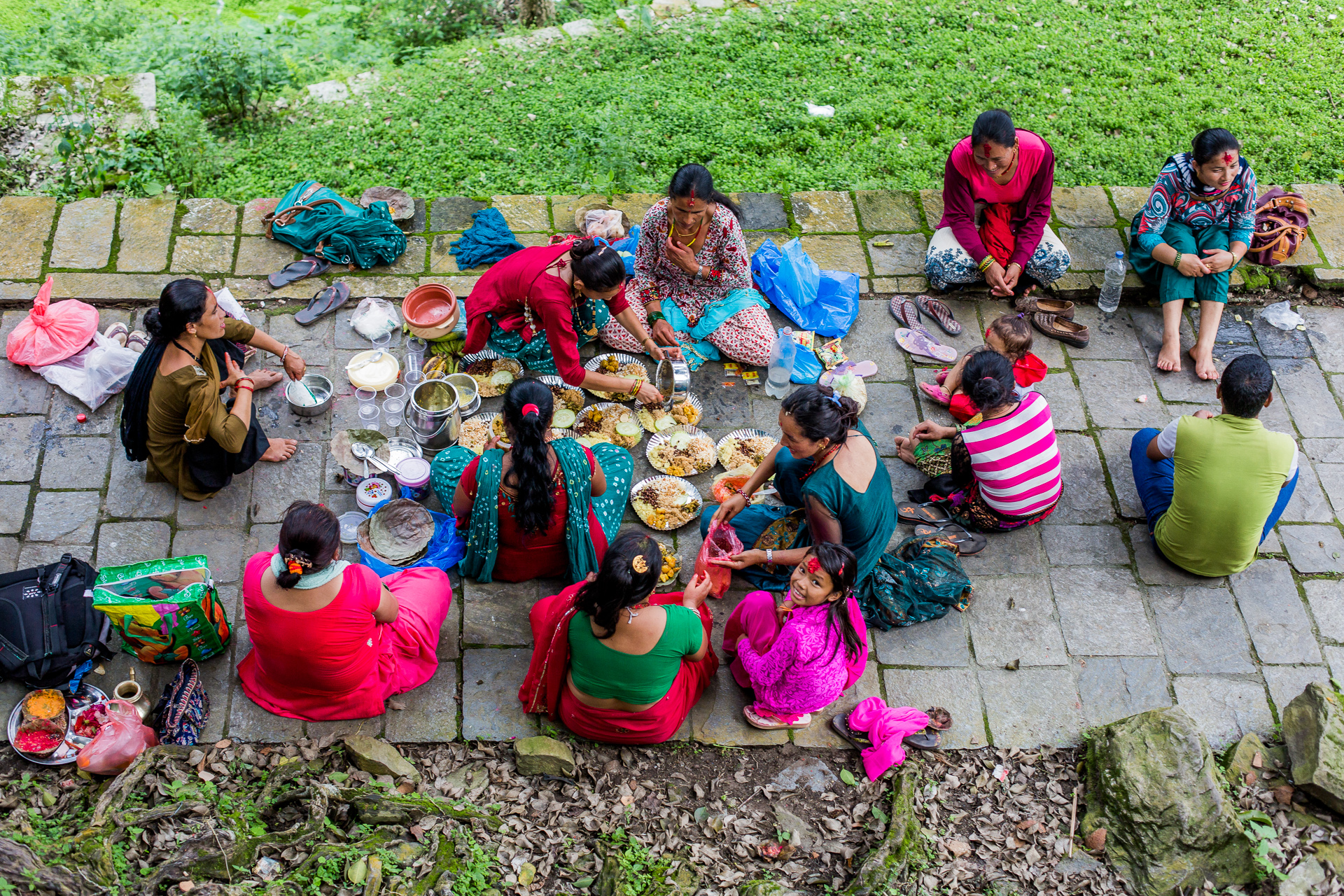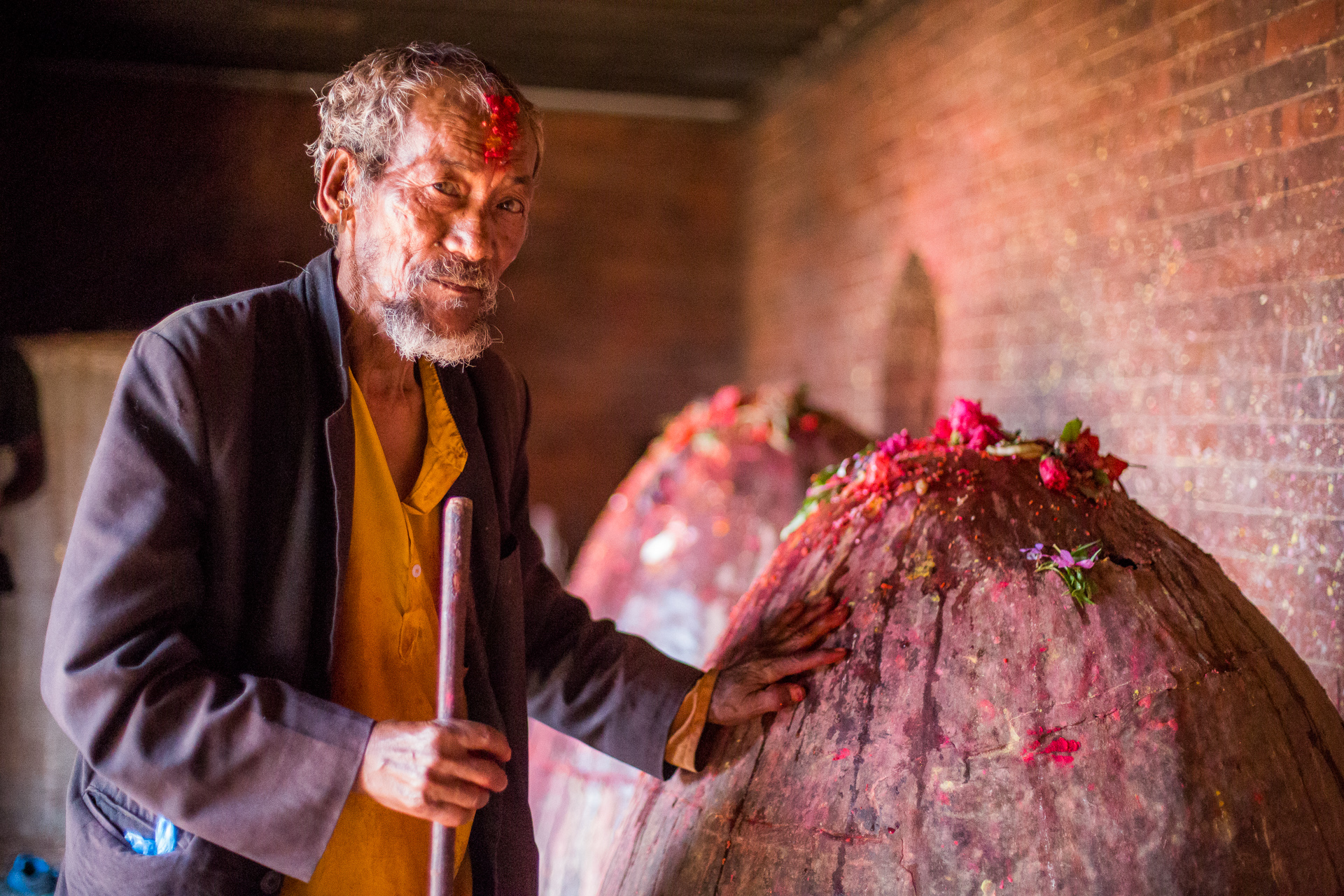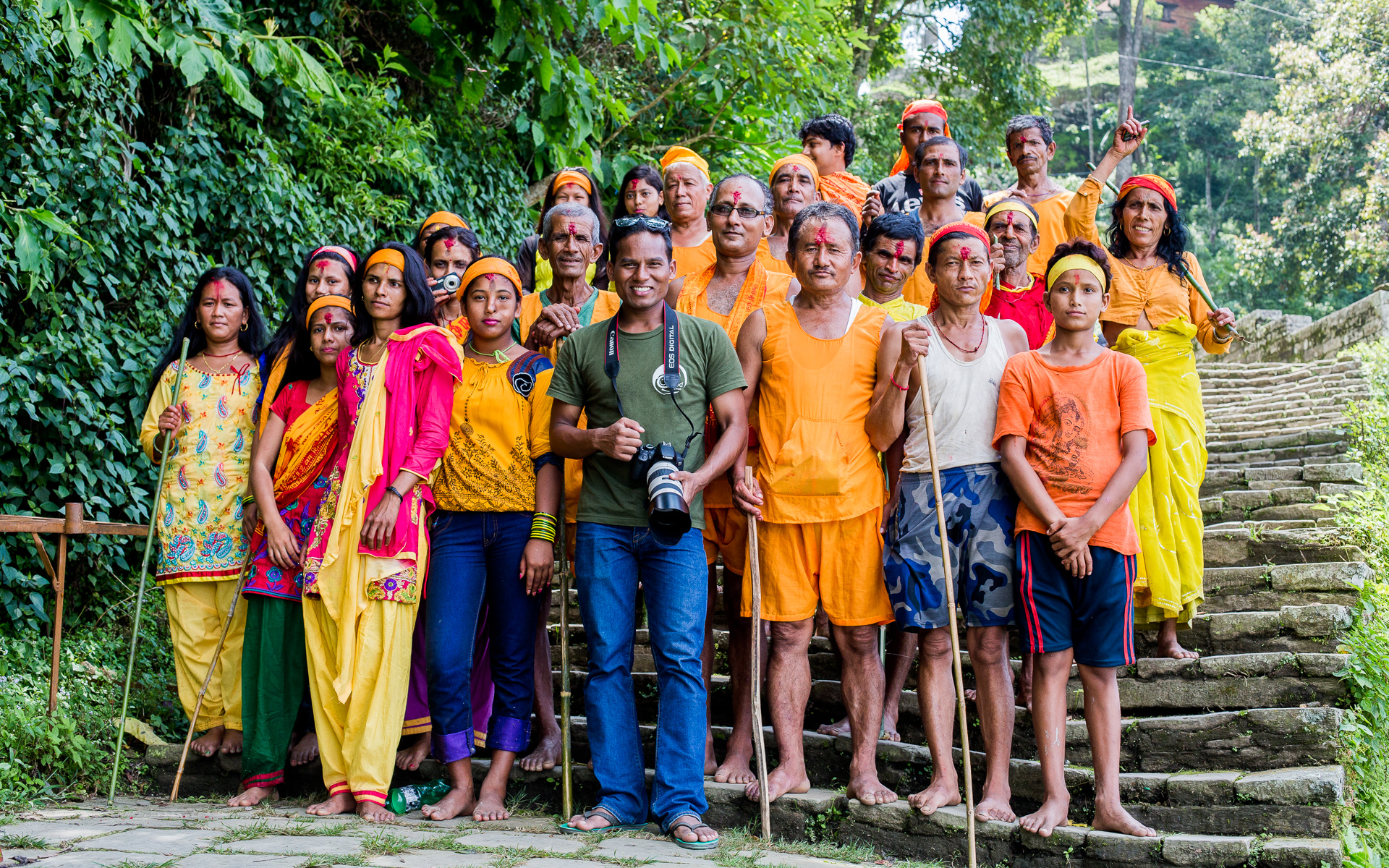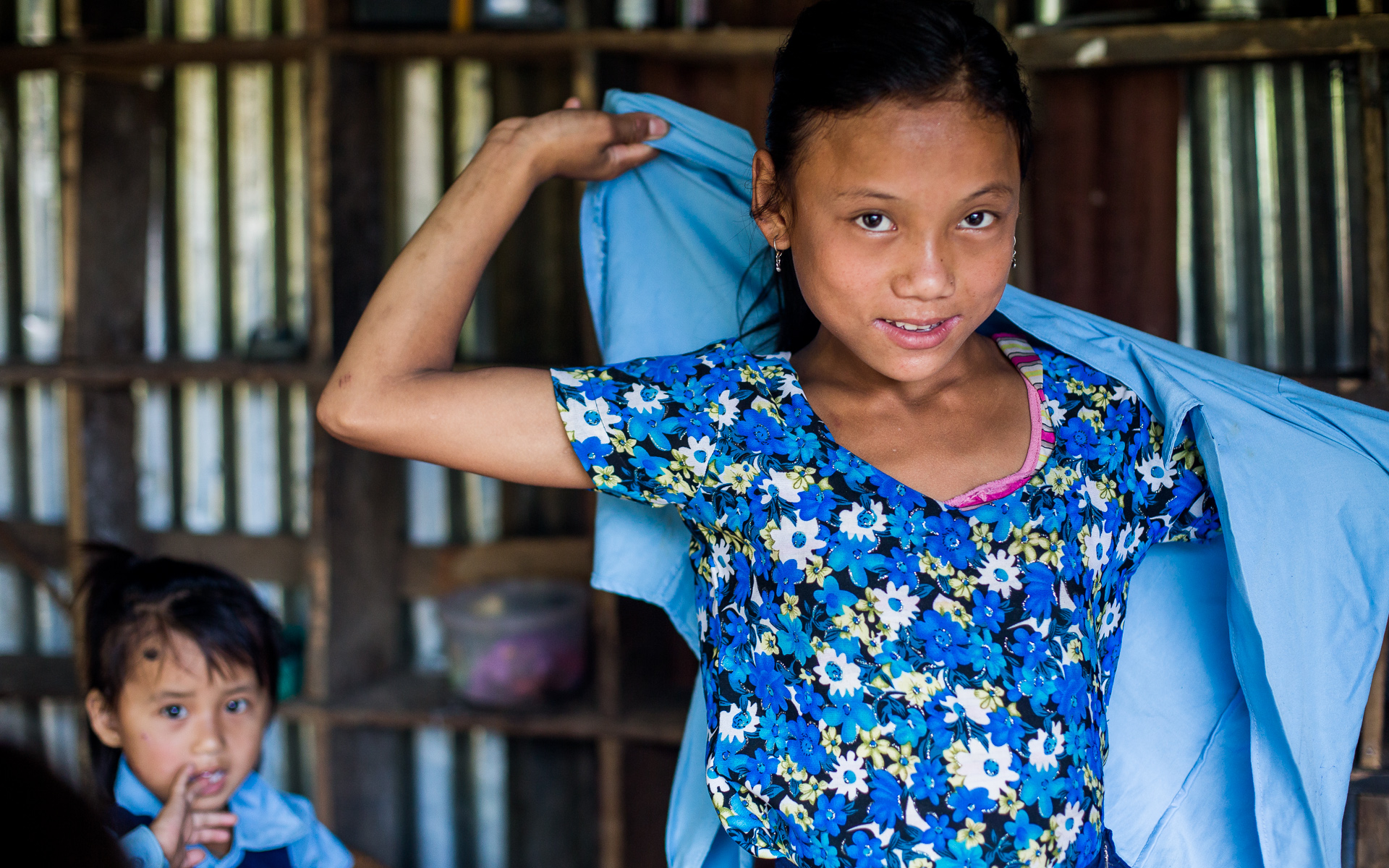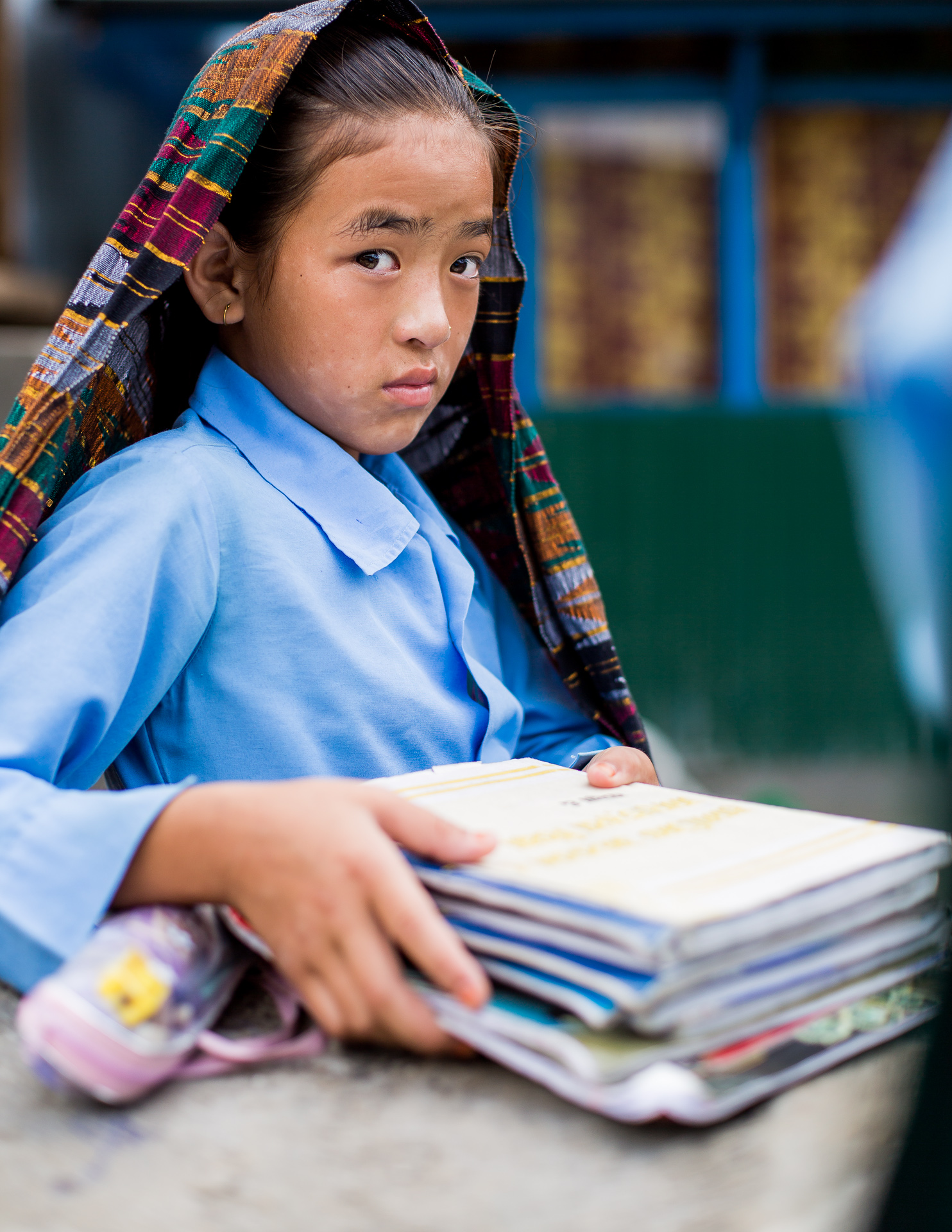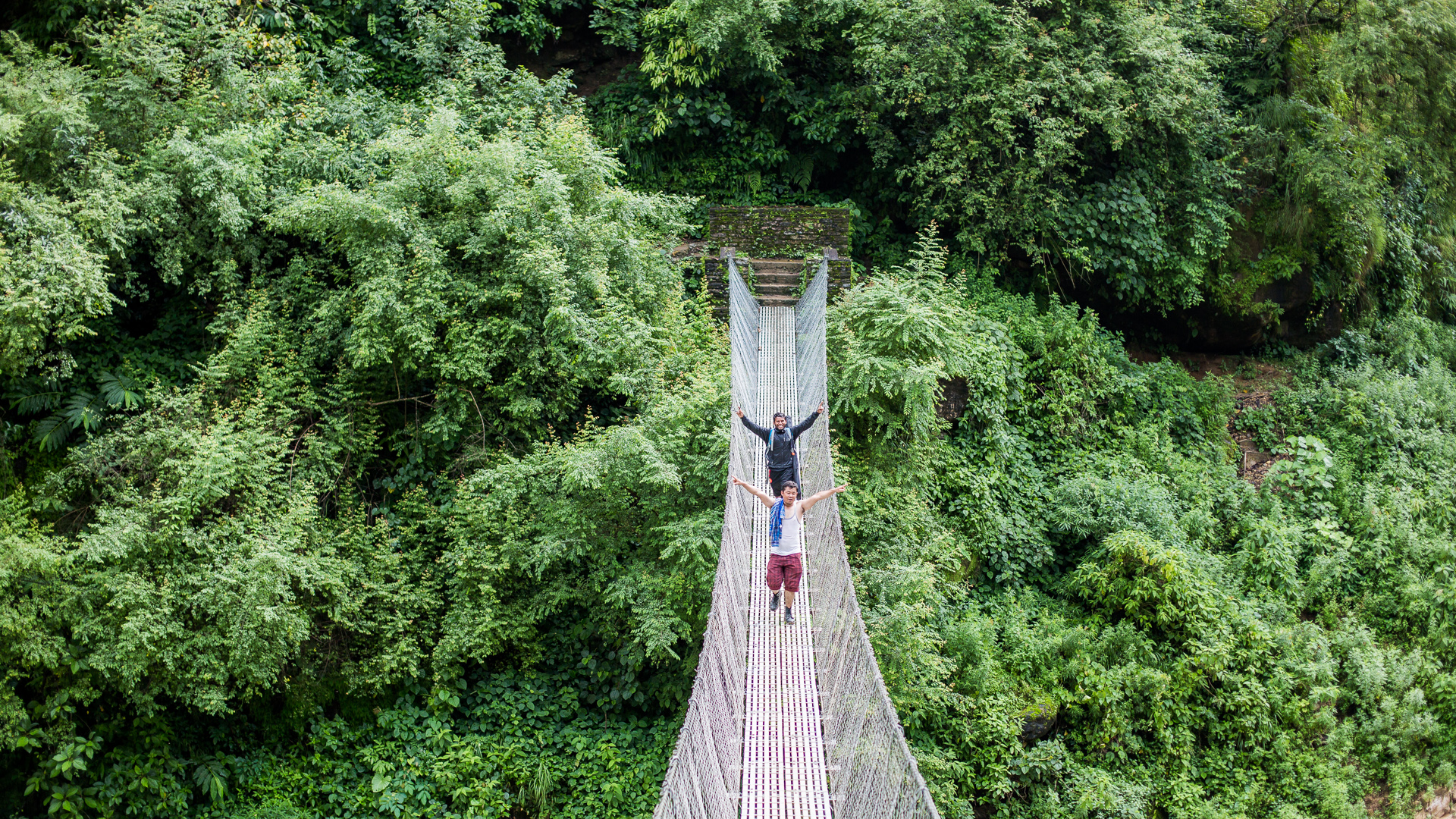Samjhana deelt schoolmaterialen uit aan de kinderen.
In de afgelopen zomer zal het nieuws van de vele hevige moesson regen in onder andere India, Bangladesh en Nepal je waarschijnlijk niet ontgaan zijn. De problemen in het regenseizoen in Azië wordt sinds enige jaren heftiger in verband met de opwarming van de aarde en zo een toenemende hoeveelheid smeltwater uit het Himalaya gebergte. Daarnaast regende het dit afgelopen jaar vele malen meer dan de opgelopen jaren. Een record aantal sinds twintig jaar. In Bangladesh overstroomde zelfs twee derde deel van het land!
Groote delen van de akkers zijn verwoest en planten zijn weggespoeld.
Micro-Care Nepal besloot een bijdrage te leveren aan de hulp in het zuidelijk deel van Nepal. Na enig onderzoek, in het bijzonder ook naar waar een arme school getroffen was besloten we aan twee schooltjes in het Chitwan district schoolmaterialen te doneren.
In deze periode vloog toevallig Samjhana ook terug naar Nepal. Pim kon helaas pas een maand later naar Nepal afreizen. Samjhana heeft contact gezocht met lokale mensen en uiteindelijk een gebied gekozen waar vee schade was door de waternood, waar de mensen veelal in armoede leven (lagere casten) en wat binnen een dag reizen in afstand van Kathmandu ligt. Het laatste vooral om de logistieke kosten laag te houden. We hebben in een gebied waar globaal al hulpverlening was, gezocht naar twee schooltjes waar nog weinig hulp aan gegeven was. De eerste prioriteit is het geven van ondersteunend schoolmateriaal. Secundair is het uitreiken van kleding.
Nadat de plannen steeds concreter werden gingen Samjhana en haar vriendin Astha Ghimire, wie als vrijwilligster mee ging, naar verschillende winkels in Kathmandu om posters en oefenpuzzels aan te schaffen. De schriften en schrijfwaren zouden ze in de buurt van de schooltjes aan kunnen schaffen en zo transportkosten te kunnen besparen.
Voor 400 leerlingen een setje met schriftjes, een potlood, een pen, een puntenslijper en een gum.
Leerling, blij met haar nieuwe schoolspullen.
Onderstaand het verhaal van Samjhana en de hulp die we boden in het zuidelijke district Chitwan.
Support to the flooded victims in Chitwan district,
By Samjhana Bishankhe,
Me and my friend Asthma we went to Chitwan together to give a small support to the big damage of the worst monsoon floods in many years. Like in most Southern districts also in Chitwan the floods mostly effected the households and farming fields and their cattle.
In the area of Chitwan where we went, more than 35 houses where totally taken by the floods, 35 people died and most of the crops are destroyed. In this time they mostly planted rice and we could see that big parts of the fields where totally gone.
Our priority was to give support to two small schools where mostly people where studying from lower casts. Because of the floods the school lost most of their educational materials and papers and pens then where still present where not possible to use anymore as they were too much damaged. We decided to We made a packet with writing paper, pencils and a sharpener and a eraser. The all we packet in a plastic clear bag for storage and protection. We packet 400 sets and divided them over the two school.
First we went to the “Adharbhut School” that was located near to a Kamaya refugee camp and a water channel. When we arrived at the school we could see in the surroundings how much damage the floods had brought to the farming fields and nearby houses. Most of it was destroyed and a layer of mud covered most of the ground. Trees where taken by the water and this created more damage to especially the houses.
At the school we met the teachers and students and outside we made an area to handover the school materials. We looked around at the school and found most books and papers that where left being destroyed by the water. The teachers welcomed us with khada (Buddhist scarf). I gave got time to give a speech and asked about at the time the floods where taking place. Te explained that now the water was gone but for many days the water was 2 meters high and they had to stay on the rooftops of their houses to safe their lives.
We handed over 150 educational packages to all children of the school. The students where very happy to get our support and thanked us so many times. They mentioned that many NGO’s disappeared after the water went and they were happy that we understood that especially at that time we wanted to support them with essential school materials. They told no other NGO came to give support to them. I felt happy that at least we could do something for them but sad that my country or other NGO’s that have much bigger budgets couldn’t help them.
Een groepje leerlingen poserend.
We continued to the second school that was located close to the big Rapti river near the village called ‘Madi’. This river found his origin in the Himalayan mountains and would end in Bangladesh in the Bay of Bengal.
Arriving there we could see how much impact the floods made on the peoples lives. People knew we were coming and as they all needed support there were more than 1000 people present at the area of the school. When starting our conversations with the local people we could see and feel their fear of the floods in their eyes. The stories they told where scary and they showed me a field now full of sand and explained that before there were 35 houses standing. All the fields in this region we could see on the way looked like the banks of a river of like a coast of the sea. Trees with roots on it where laying everywhere in the fields. Around some houses on the way there was still water. Now just a bit but before two meters high and until their rooftops.
Talking to the people I realized this in one of the places we need to give support to. I unpacked the clothing we took and started to hand it out to children and mothers with babies. These people where visibly poor. There could never be enough for all but we tried to divide the clothing as good as possible.
The school was made of concrete so it was strong enough but we could see a line till where the water had rixed almost until the top. A big tree with root was laying on the schoolyard where before children played. The people in this area are mostly lower caste people and poorest in the area.
Because of the big amount of people it was too hard to handover the school material at this time. We decided to hand it over to the teachers of the school and what would hand it over at a later moment. We were disappointed that we couldn’t bring enough for all the children but we realized that we were feeling glad to give support to them and we never could solve the whole problem.
Shocked by seeing all damage and hearing their stories we left in the jeep. People still kept coming to us to ask for more support. This is the hard fact about humanitarian aid work.
We can do something but it probably never is enough.
Again this time we were happy to do something to support our people in Nepal.
Thank you for giving us the possibility to support the people in need!
Please make a donation for the unexpected support we gave.
Samjhana Bishankhe






